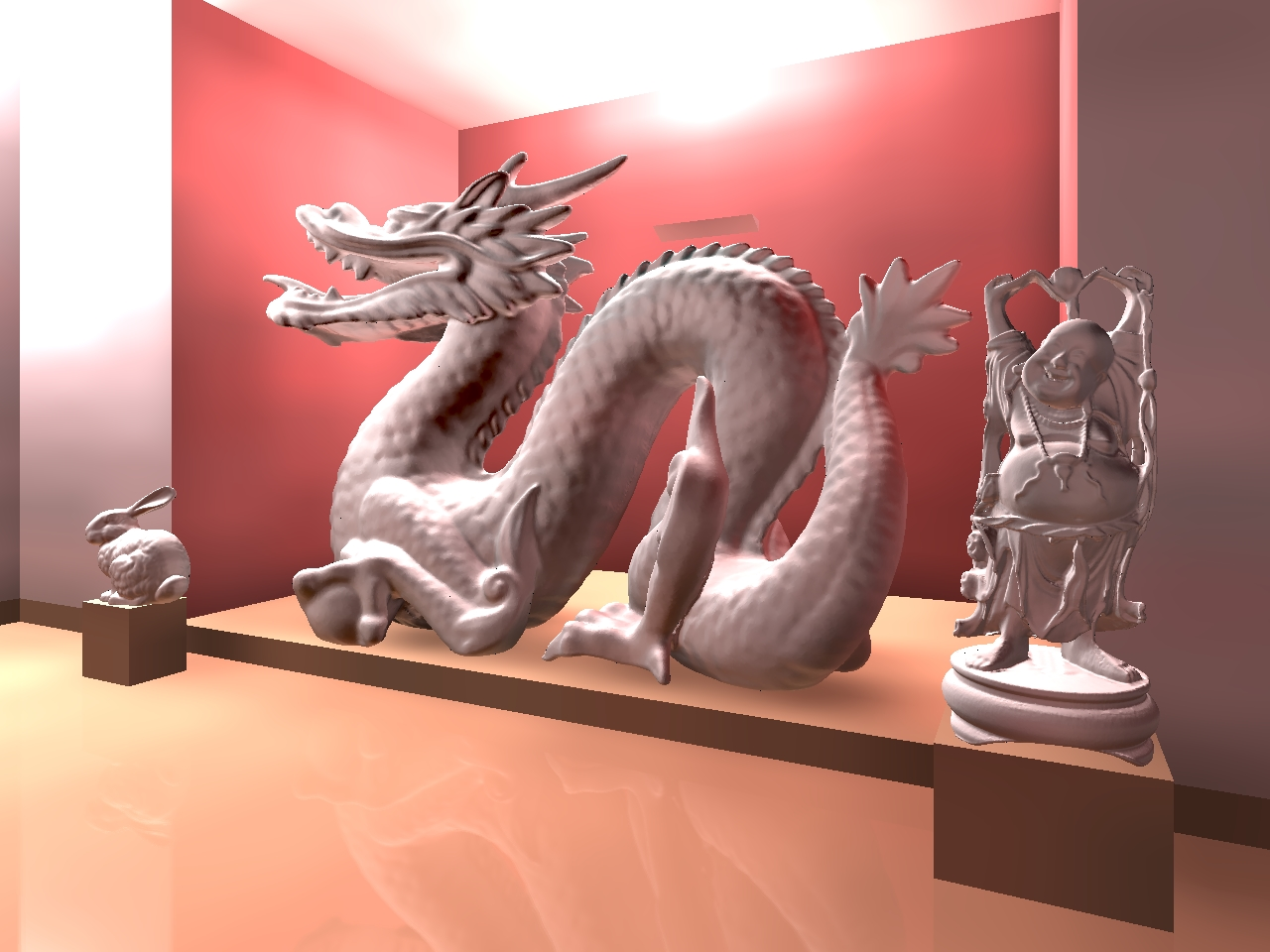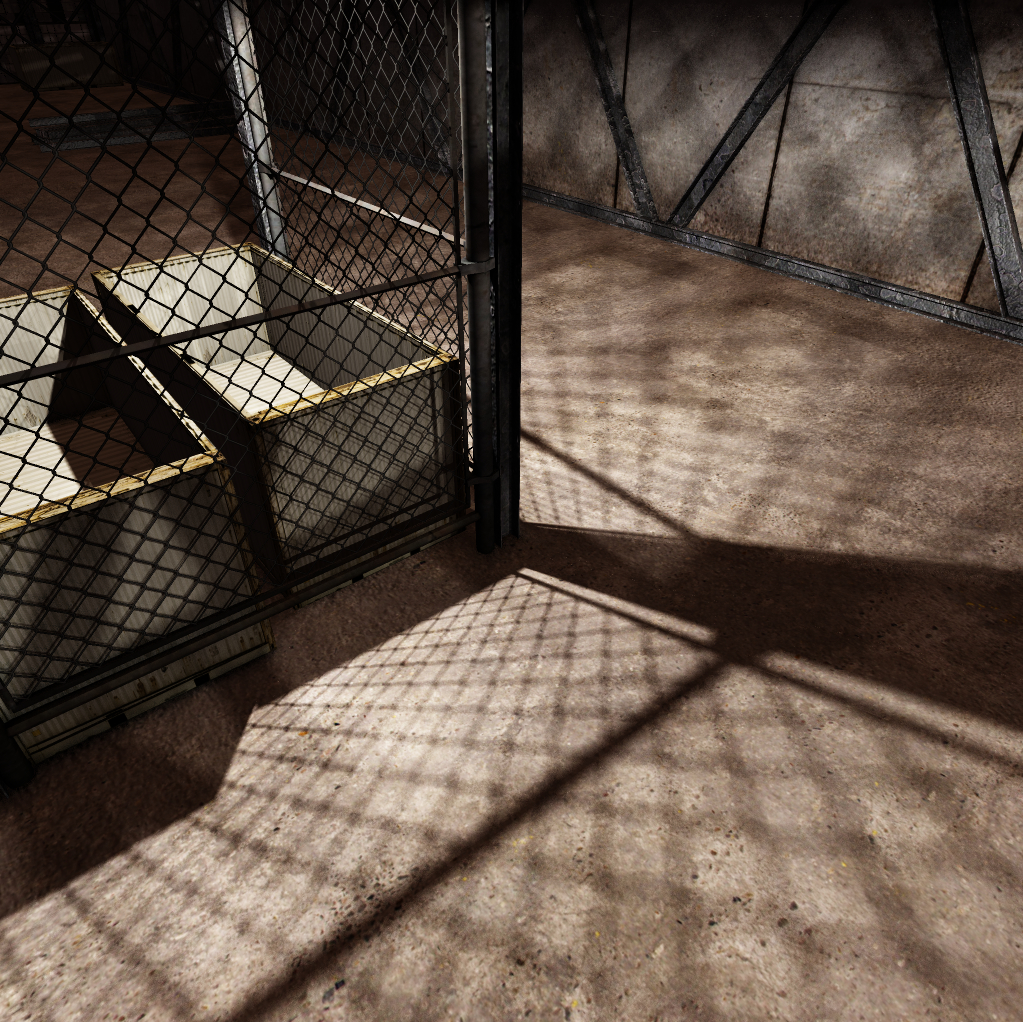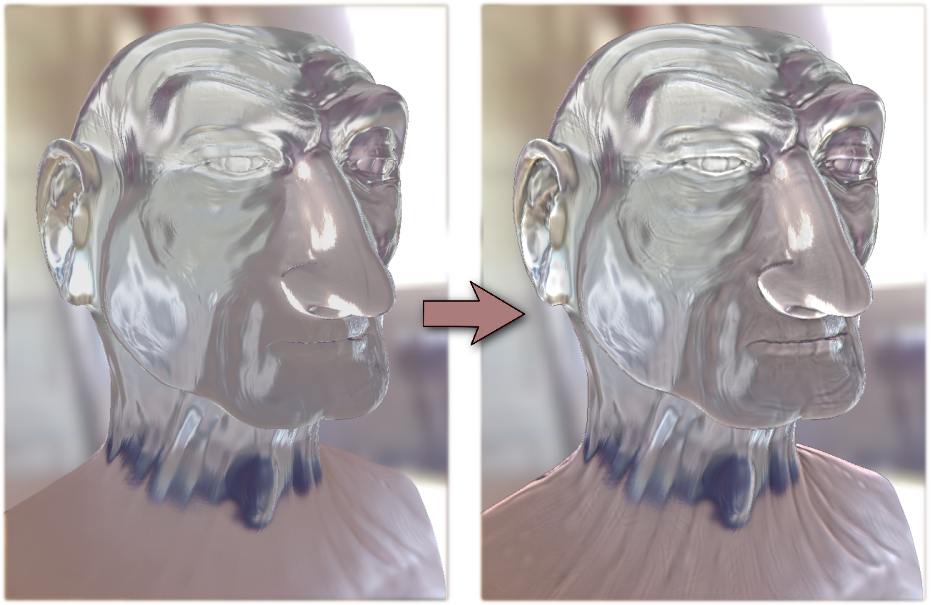Keywords
Computer Science and Digital Science
- A5. Interaction, multimedia and robotics
- A5.1.1. Engineering of interactive systems
- A5.1.6. Tangible interfaces
- A5.3.5. Computational photography
- A5.4. Computer vision
- A5.4.4. 3D and spatio-temporal reconstruction
- A5.5. Computer graphics
- A5.5.1. Geometrical modeling
- A5.5.2. Rendering
- A5.5.3. Computational photography
- A5.5.4. Animation
- A5.6. Virtual reality, augmented reality
- A6.2.3. Probabilistic methods
- A6.2.5. Numerical Linear Algebra
- A6.2.6. Optimization
- A6.2.8. Computational geometry and meshes
Other Research Topics and Application Domains
- B3.1. Sustainable development
- B3.1.1. Resource management
- B3.6. Ecology
- B5. Industry of the future
- B5.1. Factory of the future
- B9. Society and Knowledge
- B9.2. Art
- B9.2.2. Cinema, Television
- B9.2.3. Video games
- B9.6. Humanities
- B9.6.1. Psychology
- B9.6.6. Archeology, History
- B9.6.10. Digital humanities
1 Team members, visitors, external collaborators
Research Scientists
- Pascal Barla [Team leader, INRIA, Researcher, HDR]
- Gael Guennebaud [INRIA, Researcher]
- Romain Pacanowski [INRIA, Researcher]
Faculty Members
- Pierre Benard [UNIV BORDEAUX, Associate Professor]
- Patrick Reuter [UNIV BORDEAUX, Associate Professor, HDR]
Post-Doctoral Fellow
- Morgane Gerardin [UGA, from Mar 2022]
PhD Students
- Corentin Cou [CNRS]
- Melvin Even [INRIA]
- Gary Fourneau [INRIA]
- Morgane Gerardin [UGA, until Feb 2022]
- Pierre La Rocca [UNIV BORDEAUX, from Oct 2022]
- Simon Lucas [UNIV BORDEAUX]
- Panagiotis Tsiapkolis [UBISOFT, CIFRE]
Technical Staff
- Marjorie Paillet [INRIA, Engineer]
Interns and Apprentices
- Antoine Dudouit [Bordeaux University, from Feb 2022 until Jul 2022]
- Bastien Morel [Inria, Intern, from May 2022 until Jul 2022]
Administrative Assistant
- Anne-Laure Gautier [INRIA]
External Collaborator
- Xavier Granier [UNIV PARIS SACLAY, from Dec 2022, HDR]
2 Overall objectives
2.1 General Introduction
Computer generated images are ubiquitous in our everyday life. Such images are the result of a process that has seldom changed over the years: the optical phenomena due to the propagation of light in a 3D environment are simulated taking into account how light is scattered 51, 28 according to shape and material characteristics of objects. The intersection of optics (for the underlying laws of physics) and computer science (for its modeling and computational efficiency aspects) provides a unique opportunity to tighten the links between these domains in order to first improve the image generation process (computer graphics, optics and virtual reality) and next to develop new acquisition and display technologies (optics, mixed reality and machine vision).
Most of the time, light, shape, and matter properties are studied, acquired, and modeled separately, relying on realistic or stylized rendering processes to combine them in order to create final pixel colors. Such modularity, inherited from classical physics, has the practical advantage of permitting to reuse the same models in various contexts. However, independent developments lead to un-optimized pipelines and difficult-to-control solutions since it is often not clear which part of the expected result is caused by which property. Indeed, the most efficient solutions are most often the ones that blur the frontiers between light, shape, and matter to lead to specialized and optimized pipelines, as in real-time applications (like Bidirectional Texture Functions 61 and Light-Field rendering 26). Keeping these three properties separated may lead to other problems. For instance:
- Measured materials are too detailed to be usable in rendering systems and data reduction techniques have to be developed 60, 62, leading to an inefficient transfer between real and digital worlds;
- It is currently extremely challenging (if not impossible) to directly control or manipulate the interactions between light, shape, and matter. Accurate lighting processes may create solutions that do not fulfill users' expectations;
- Artists can spend hours and days in modeling highly complex surfaces whose details will not be visible 82 due to inappropriate use of certain light sources or reflection properties.
Most traditional applications target human observers. Depending on how deep we take into account the specificity of each user, the requirement of representations, and algorithms may differ.
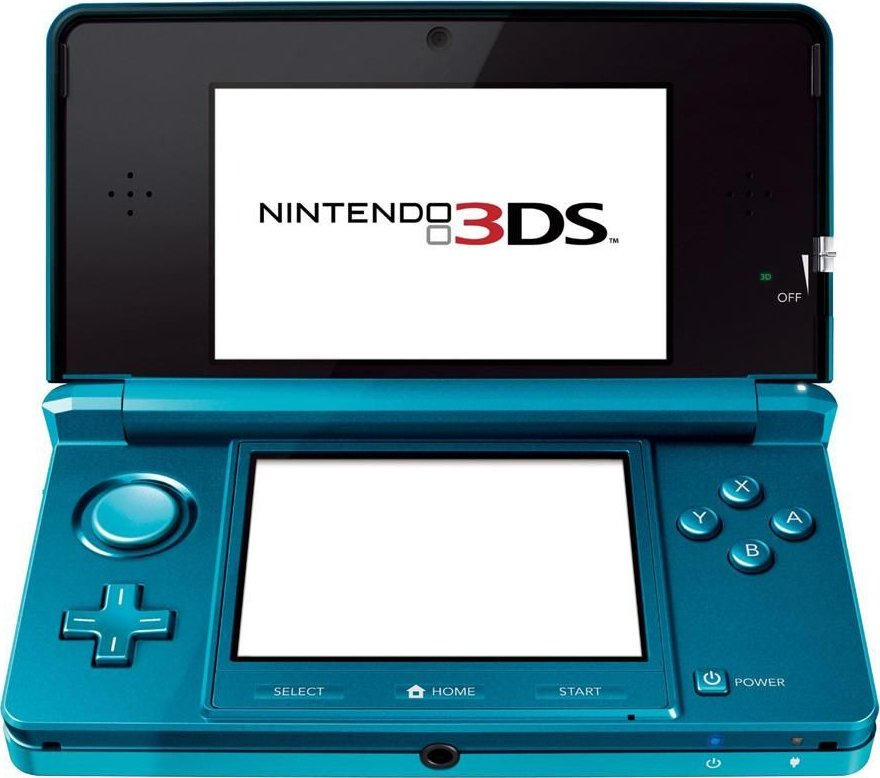
|

|
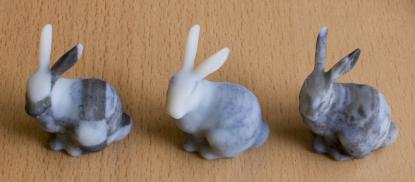
|
| Auto-stereoscopy display | HDR display | Printing both geometry and material |
| ©Nintendo | ©Dolby Digital | 43 |
With the evolution of measurement and display technologies that go beyond conventional images (e.g., as illustrated in Figure 1, High-Dynamic Range Imaging 72, stereo displays or new display technologies 47, and physical fabrication 18, 35, 43) the frontiers between real and virtual worlds are vanishing 31. In this context, a sensor combined with computational capabilities may also be considered as another kind of observer. Creating separate models for light, shape, and matter for such an extended range of applications and observers is often inefficient and sometimes provides unexpected results. Pertinent solutions must be able to take into account properties of the observer (human or machine) and application goals.
2.2 Methodology

Interactions/Transfers between real and virtual worlds.
2.2.1 Using a global approach
The main goal of the MANAO project is to study phenomena resulting from the interactions between the three components that describe light propagation and scattering in a 3D environment: light, shape, and matter. Improving knowledge about these phenomena facilitates the adaption of the developed digital, numerical, and analytic models to specific contexts. This leads to the development of new analysis tools, new representations, and new instruments for acquisition, visualization, and display.
To reach this goal, we have to first increase our understanding of the different phenomena resulting from the interactions between light, shape, and matter. For this purpose, we consider how they are captured or perceived by the final observer, taking into account the relative influence of each of the three components. Examples include but are not limited to:
- The manipulation of light to reveal reflective 23 or geometric properties 89, as mastered by professional photographers;
- The modification of material characteristics or lighting conditions 88 to better understand shape features, for instance to decipher archaeological artifacts;
- The large influence of shape on the captured variation of shading 70 and thus on the perception of material properties 85.
Based on the acquired knowledge of the influence of each of the components, we aim at developing new models that combine two or three of these components. Examples include the modeling of Bidirectional Texture Functions (BTFs) 34 that encode in a unique representation effects of parallax, multiple light reflections, and also shadows without requiring to store separately the reflective properties and the meso-scale geometric details, or Light-Fields that are used to render 3D scenes by storing only the result of the interactions between light, shape, and matter both in complex real environments and in simulated ones.
One of the strengths of MANAO is that we are inter-connecting computer graphics and optics (Figure 2). On one side, the laws of physics are required to create images but may be bent to either increase performance or user's control: this is one of the key advantage of computer graphics approach. It is worth noticing that what is not possible in the real world may be possible in a digital world. However, on the other side, the introduced approximations may help to better comprehend the physical interactions of light, shape, and matter.
2.2.2 Taking observers into account
The MANAO project specifically aims at considering information transfer, first from the real world to the virtual world (acquisition and creation), then from computers to observers (visualization and display). For this purpose, we use a larger definition of what an observer is: it may be a human user or a physical sensor equipped with processing capabilities. Sensors and their characteristics must be taken into account in the same way as we take into account the human visual system in computer graphics. Similarly, computational capabilities may be compared to cognitive capabilities of human users. Some characteristics are common to all observers, such as the scale of observed phenomena. Some others are more specifics to a set of observers. For this purpose, we have identified two classes of applications.
- Physical systems Provided our partnership that leads to close relationships with optics, one novelty of our approach is to extend the range of possible observers to physical sensors in order to work on domains such as simulation, mixed reality, and testing. Capturing, processing, and visualizing complex data is now more and more accessible to everyone, leading to the possible convergence of real and virtual worlds through visual signals. This signal is traditionally captured by cameras. It is now possible to augment them by projecting (e.g., the infrared laser of Microsoft Kinect) and capturing (e.g., GPS localization) other signals that are outside the visible range. These supplemental information replace values traditionally extracted from standard images and thus lower down requirements in computational power 58. Since the captured images are the result of the interactions between light, shape, and matter, the approaches and the improved knowledge from MANAO help in designing interactive acquisition and rendering technologies that are required to merge the real and the virtual world. With the resulting unified systems (optical and digital), transfer of pertinent information is favored and inefficient conversion is likely avoided, leading to new uses in interactive computer graphics applications, like augmented reality 22, 31 and computational photography 71.
- Interactive visualization This direction includes domains such as scientific illustration and visualization, artistic or plausible rendering. In all these cases, the observer, a human, takes part in the process, justifying once more our focus on real-time methods. When targeting average users, characteristics as well as limitations of the human visual system should be taken into account: in particular, it is known that some configurations of light, shape, and matter have masking and facilitation effects on visual perception 82. For specialized applications, the expertise of the final user and the constraints for 3D user interfaces lead to new uses and dedicated solutions for models and algorithms.
3 Research program
3.1 Related Scientific Domains

Related scientific domains of the MANAO project
The MANAO project aims at studying, acquiring, modeling, and rendering the interactions between the three components that are light, shape, and matter from the viewpoint of an observer. As detailed more lengthily in the next section, such a work will be done using the following approach: first, we will tend to consider that these three components do not have strict frontiers when considering their impacts on the final observers; then, we will not only work in computer graphics, but also at the intersection of computer graphics and optics, exploring the mutual benefits that the two domains may provide. It is thus intrinsically a transdisciplinary project (as illustrated in Figure 3) and we expect results in both domains.
Thus, the proposed team-project aims at establishing a close collaboration between computer graphics (e.g., 3D modeling, geometry processing, shading techniques, vector graphics, and GPU programming) and optics (e.g., design of optical instruments, and theories of light propagation). The following examples illustrate the strengths of such a partnership. First, in addition to simpler radiative transfer equations 36 commonly used in computer graphics, research in the later will be based on state-of-the-art understanding of light propagation and scattering in real environments. Furthermore, research will rely on appropriate instrumentation expertise for the measurement 48, 49 and display 47 of the different phenomena. Reciprocally, optics researches may benefit from the expertise of computer graphics scientists on efficient processing to investigate interactive simulation, visualization, and design. Furthermore, new systems may be developed by unifying optical and digital processing capabilities. Currently, the scientific background of most of the team members is related to computer graphics and computer vision. A large part of their work have been focused on simulating and analyzing optical phenomena as well as in acquiring and visualizing them. Combined with the close collaboration with the optics laboratory LP2N and with the students issued from the “Institut d'Optique”, this background ensures that we can expect the following results from the project: the construction of a common vocabulary for tightening the collaboration between the two scientific domains and creating new research topics. By creating this context, we expect to attract (and even train) more trans-disciplinary researchers.
At the boundaries of the MANAO project lie issues in human and machine vision. We have to deal with the former whenever a human observer is taken into account. On one side, computational models of human vision are likely to guide the design of our algorithms. On the other side, the study of interactions between light, shape, and matter may shed some light on the understanding of visual perception. The same kind of connections are expected with machine vision. On the one hand, traditional computational methods for acquisition (such as photogrammetry) are going to be part of our toolbox. On the other hand, new display technologies (such as the ones used for augmented reality) are likely to benefit from our integrated approach and systems. In the MANAO project we are mostly users of results from human vision. When required, some experimentation might be done in collaboration with experts from this domain, like with the European PRISM project. For machine vision, provided the tight collaboration between optical and digital systems, research will be carried out inside the MANAO project.
Analysis and modeling rely on tools from applied mathematics such as differential and projective geometry, multi-scale models, frequency analysis 38 or differential analysis 70, linear and non-linear approximation techniques, stochastic and deterministic integrations, and linear algebra. We not only rely on classical tools, but also investigate and adapt recent techniques (e.g., improvements in approximation techniques), focusing on their ability to run on modern hardware: the development of our own tools (such as Eigen) is essential to control their performances and their abilities to be integrated into real-time solutions or into new instruments.
3.2 Research axes
The MANAO project is organized around four research axes that cover the large range of expertise of its members and associated members. We briefly introduce these four axes in this section. More details and their inter-influences that are illustrated in the Figure 2 will be given in the following sections.
Axis 1 is the theoretical foundation of the project. Its main goal is to increase the understanding of light, shape, and matter interactions by combining expertise from different domains: optics and human/machine vision for the analysis and computer graphics for the simulation aspect. The goal of our analyses is to identify the different layers/phenomena that compose the observed signal. In a second step, the development of physical simulations and numerical models of these identified phenomena is a way to validate the pertinence of the proposed decompositions.
In Axis 2, the final observers are mainly physical captors. Our goal is thus the development of new acquisition and display technologies that combine optical and digital processes in order to reach fast transfers between real and digital worlds, in order to increase the convergence of these two worlds.
Axes 3 and 4 focus on two aspects of computer graphics: rendering, visualization and illustration in Axis 3, and editing and modeling (content creation) in Axis 4. In these two axes, the final observers are mainly human users, either generic users or expert ones (e.g., archaeologist 74, computer graphics artists).
3.3 Axis 1: Analysis and Simulation
Challenge: Definition and understanding of phenomena resulting from interactions between light, shape, and matter as seen from an observer point of view.
Results: Theoretical tools and numerical models for analyzing and simulating the observed optical phenomena.
To reach the goals of the MANAO project, we need to increase our understanding of how light, shape, and matter act together in synergy and how the resulting signal is finally observed. For this purpose, we need to identify the different phenomena that may be captured by the targeted observers. This is the main objective of this research axis, and it is achieved by using three approaches: the simulation of interactions between light, shape, and matter, their analysis and the development of new numerical models. This resulting improved knowledge is a foundation for the researches done in the three other axes, and the simulation tools together with the numerical models serve the development of the joint optical/digital systems in Axis 2 and their validation.
One of the main and earliest goals in computer graphics is to faithfully reproduce the real world, focusing mainly on light transport. Compared to researchers in physics, researchers in computer graphics rely on a subset of physical laws (mostly radiative transfer and geometric optics), and their main concern is to efficiently use the limited available computational resources while developing as fast as possible algorithms. For this purpose, a large set of theoretical as well as computational tools has been introduced to take a maximum benefit of hardware specificities. These tools are often dedicated to specific phenomena (e.g., direct or indirect lighting, color bleeding, shadows, caustics). An efficiency-driven approach needs such a classification of light paths 44 in order to develop tailored strategies 86. For instance, starting from simple direct lighting, more complex phenomena have been progressively introduced: first diffuse indirect illumination 42, 78, then more generic inter-reflections 51, 36 and volumetric scattering 75, 33. Thanks to this search for efficiency and this classification, researchers in computer graphics have developed a now recognized expertise in fast-simulation of light propagation. Based on finite elements (radiosity techniques) or on unbiased Monte Carlo integration schemes (ray-tracing, particle-tracing, ...), the resulting algorithms and their combination are now sufficiently accurate to be used-back in physical simulations. The MANAO project will continue the search for efficient and accurate simulation techniques, but extending it from computer graphics to optics. Thanks to the close collaboration with scientific researchers from optics, new phenomena beyond radiative transfer and geometric optics will be explored.
Search for algorithmic efficiency and accuracy has to be done in parallel with numerical models.
The goal of visual fidelity (generalized to accuracy from an observer point of view in the project) combined with the goal of efficiency leads to the development of alternative representations.
For instance, common classical finite-element techniques compute only basis coefficients for each discretization element: the required discretization density would be too large and to computationally expensive to obtain detailed spatial variations and thus visual fidelity.
Examples includes texture for decorrelating surface details from surface geometry and high-order wavelets for a multi-scale representation of lighting 32.
The numerical complexity explodes when considering directional properties of light transport such as radiance intensity (Watt per square meter and per steradian -
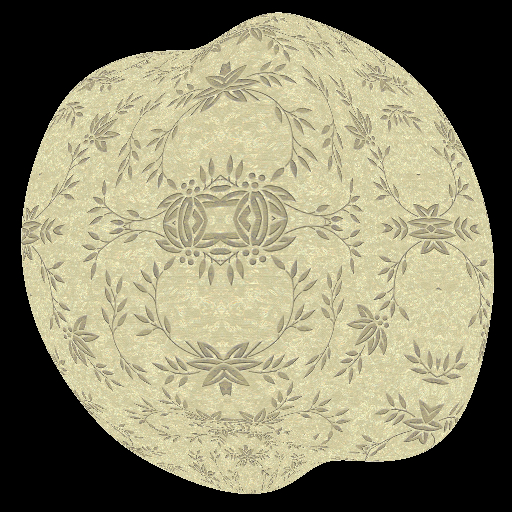
|
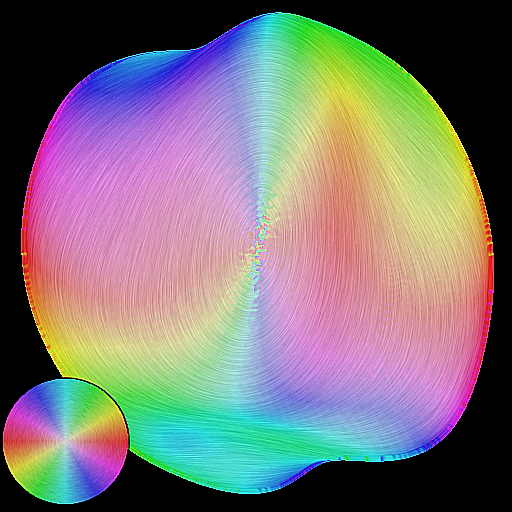
|
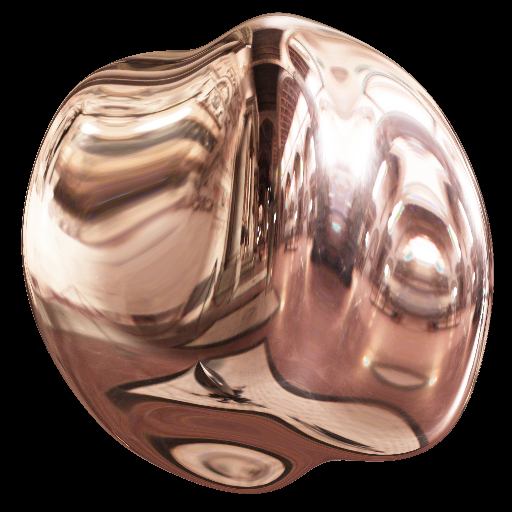
|
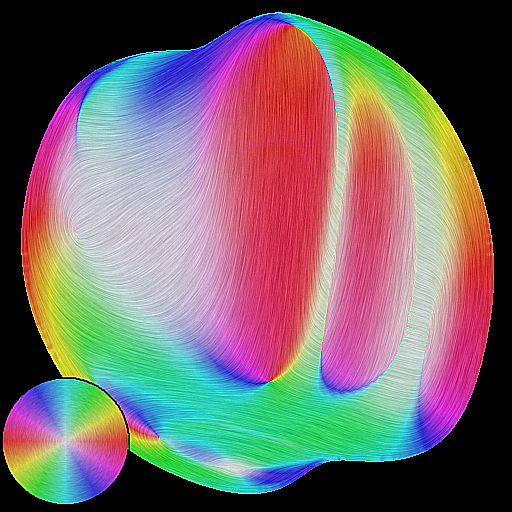
|
| Texuring | 1st order gradient field | Environment reflection | 2st order gradient field |
Before being able to simulate or to represent the different observed phenomena, we need to define and describe them. To understand the difference between an observed phenomenon and the classical light, shape, and matter decomposition, we can take the example of a highlight. Its observed shape (by a human user or a sensor) is the resulting process of the interaction of these three components, and can be simulated this way. However, this does not provide any intuitive understanding of their relative influence on the final shape: an artist will directly describe the resulting shape, and not each of the three properties. We thus want to decompose the observed signal into models for each scale that can be easily understandable, representable, and manipulable. For this purpose, we will rely on the analysis of the resulting interaction of light, shape, and matter as observed by a human or a physical sensor. We first consider this analysis from an optical point of view, trying to identify the different phenomena and their scale according to their mathematical properties (e.g., differential 70 and frequency analysis 38). Such an approach has leaded us to exhibit the influence of surfaces flows (depth and normal gradients) into lighting pattern deformation (see Figure 4). For a human observer, this correspond to one recent trend in computer graphics that takes into account the human visual systems 39 both to evaluate the results and to guide the simulations.
3.4 Axis 2: From Acquisition to Display
Challenge: Convergence of optical and digital systems to blend real and virtual worlds.
Results: Instruments to acquire real world, to display virtual world, and to make both of them interact.
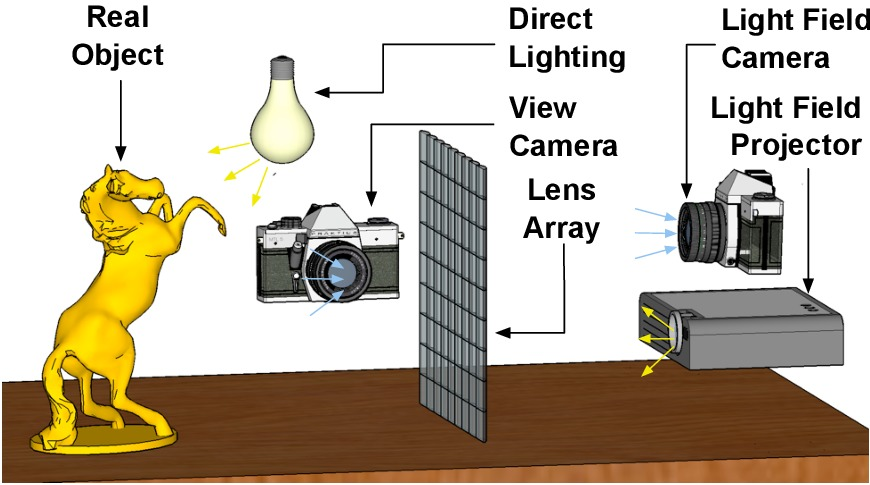
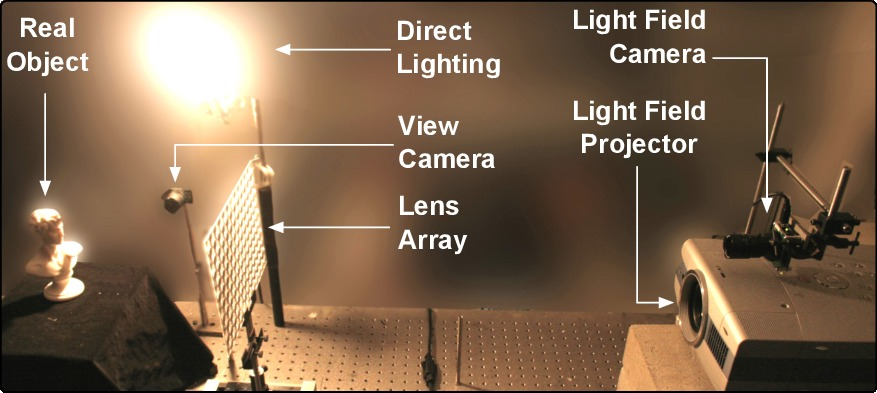
In this axis, we investigate unified acquisition and display systems, that is systems which combine optical instruments with digital processing. From digital to real, we investigate new display approaches 59, 47. We consider projecting systems and surfaces 27, for personal use, virtual reality and augmented reality 22. From the real world to the digital world, we favor direct measurements of parameters for models and representations, using (new) optical systems unless digitization is required 41, 40. These resulting systems have to acquire the different phenomena described in Axis 1 and to display them, in an efficient manner 45, 21, 46, 49. By efficient, we mean that we want to shorten the path between the real world and the virtual world by increasing the data bandwidth between the real (analog) and the virtual (digital) worlds, and by reducing the latency for real-time interactions (we have to prevent unnecessary conversions, and to reduce processing time). To reach this goal, the systems have to be designed as a whole, not by a simple concatenation of optical systems and digital processes, nor by considering each component independently 50.
To increase data bandwidth, one solution is to parallelize more and more the physical systems. One possible solution is to multiply the number of simultaneous acquisitions (e.g., simultaneous images from multiple viewpoints 49, 68). Similarly, increasing the number of viewpoints is a way toward the creation of full 3D displays 59. However, full acquisition or display of 3D real environments theoretically requires a continuous field of viewpoints, leading to huge data size. Despite the current belief that the increase of computational power will fill the missing gap, when it comes to visual or physical realism, if you double the processing power, people may want four times more accuracy, thus increasing data size as well. To reach the best performances, a trade-off has to be found between the amount of data required to represent accurately the reality and the amount of required processing. This trade-off may be achieved using compressive sensing. Compressive sensing is a new trend issued from the applied mathematics community that provides tools to accurately reconstruct a signal from a small set of measurements assuming that it is sparse in a transform domain (e.g., 67, 92).
We prefer to achieve this goal by avoiding as much as possible the classical approach where acquisition is followed by a fitting step: this requires in general a large amount of measurements and the fitting itself may consume consequently too much memory and preprocessing time. By preventing unnecessary conversion through fitting techniques, such an approach increase the speed and reduce the data transfer for acquisition but also for display. One of the best recent examples is the work of Cossairt et al. 31. The whole system is designed around a unique representation of the energy-field issued from (or leaving) a 3D object, either virtual or real: the Light-Field. A Light-Field encodes the light emitted in any direction from any position on an object. It is acquired thanks to a lens-array that leads to the capture of, and projection from, multiple simultaneous viewpoints. A unique representation is used for all the steps of this system. Lens-arrays, parallax barriers, and coded-aperture 57 are one of the key technologies to develop such acquisition (e.g., Light-Field camera 1 50 and acquisition of light-sources 41), projection systems (e.g., auto-stereoscopic displays). Such an approach is versatile and may be applied to improve classical optical instruments 55. More generally, by designing unified optical and digital systems 64, it is possible to leverage the requirement of processing power, the memory footprint, and the cost of optical instruments.
Those are only some examples of what we investigate. We also consider the following approaches to develop new unified systems. First, similar to (and based on) the analysis goal of Axis 1, we have to take into account as much as possible the characteristics of the measurement setup. For instance, when fitting cannot be avoided, integrating them may improve both the processing efficiency and accuracy 66. Second, we have to integrate signals from multiple sensors (such as GPS, accelerometer, ...) to prevent some computation (e.g., 58). Finally, the experience of the group in surface modeling help the design of optical surfaces 53 for light sources or head-mounted displays.
3.5 Axis 3: Rendering, Visualization and Illustration
Challenge: How to offer the most legible signal to the final observer in real-time?
Results: High-level shading primitives, expressive rendering techniques for object depiction, real-time realistic rendering algorithms
The main goal of this axis is to offer to the final observer, in this case mostly a human user, the most legible signal in real-time. Thanks to the analysis and to the decomposition in different phenomena resulting from interactions between light, shape, and matter (Axis 1), and their perception, we can use them to convey essential information in the most pertinent way. Here, the word pertinent can take various forms depending on the application.
In the context of scientific illustration and visualization, we are primarily interested in tools to convey shape or material characteristics of objects in animated 3D scenes. Expressive rendering techniques (see Figure 6c,d) provide means for users to depict such features with their own style. To introduce our approach, we detail it from a shape-depiction point of view, domain where we have acquired a recognized expertise. Prior work in this area mostly focused on stylization primitives to achieve line-based rendering 90, 54 or stylized shading 25, 88 with various levels of abstraction. A clear representation of important 3D object features remains a major challenge for better shape depiction, stylization and abstraction purposes. Most existing representations provide only local properties (e.g., curvature), and thus lack characterization of broader shape features. To overcome this limitation, we are developing higher level descriptions of shape 19 with increased robustness to sparsity, noise, and outliers. This is achieved in close collaboration with Axis 1 by the use of higher-order local fitting methods, multi-scale analysis, and global regularization techniques. In order not to neglect the observer and the material characteristics of the objects, we couple this approach with an analysis of the appearance model. To our knowledge, this is an approach which has not been considered yet. This research direction is at the heart of the MANAO project, and has a strong connection with the analysis we plan to conduct in Axis 1. Material characteristics are always considered at the light ray level, but an understanding of higher-level primitives (like the shape of highlights and their motion) would help us to produce more legible renderings and permit novel stylizations; for instance, there is no method that is today able to create stylized renderings that follow the motion of highlights or shadows. We also believe such tools also play a fundamental role for geometry processing purposes (such as shape matching, reassembly, simplification), as well as for editing purposes as discussed in Axis 4.
In the context of real-time photo-realistic rendering ((see Figure 6a,b), the challenge is to compute the most plausible images with minimal effort. During the last decade, a lot of work has been devoted to design approximate but real-time rendering algorithms of complex lighting phenomena such as soft-shadows 91, motion blur 38, depth of field 79, reflexions, refractions, and inter-reflexions. For most of these effects it becomes harder to discover fundamentally new and faster methods. On the other hand, we believe that significant speedup can still be achieved through more clever use of massively parallel architectures of the current and upcoming hardware, and/or through more clever tuning of the current algorithms. In particular, regarding the second aspect, we remark that most of the proposed algorithms depend on several parameters which can be used to trade the speed over the quality. Significant speed-up could thus be achieved by identifying effects that would be masked or facilitated and thus devote appropriate computational resources to the rendering 56, 37. Indeed, the algorithm parameters controlling the quality vs speed are numerous without a direct mapping between their values and their effect. Moreover, their ideal values vary over space and time, and to be effective such an auto-tuning mechanism has to be extremely fast such that its cost is largely compensated by its gain. We believe that our various work on the analysis of the appearance such as in Axis 1 could be beneficial for such purpose too.
Realistic and real-time rendering is closely related to Axis 2: real-time rendering is a requirement to close the loop between real world and digital world. We have to thus develop algorithms and rendering primitives that allow the integration of the acquired data into real-time techniques. We have also to take care of that these real-time techniques have to work with new display systems. For instance, stereo, and more generally multi-view displays are based on the multiplication of simultaneous images. Brute force solutions consist in independent rendering pipeline for each viewpoint. A more energy-efficient solution would take advantages of the computation parts that may be factorized. Another example is the rendering techniques based on image processing, such as our work on augmented reality 29. Independent image processing for each viewpoint may disturb the feeling of depth by introducing inconsistent information in each images. Finally, more dedicated displays 47 would require new rendering pipelines.
3.6 Axis 4: Editing and Modeling
Challenge: Editing and modeling appearance using drawing- or sculpting-like tools through high level representations.
Results: High-level primitives and hybrid representations for appearance and shape.
During the last decade, the domain of computer graphics has exhibited tremendous improvements in image quality, both for 2D applications and 3D engines. This is mainly due to the availability of an ever increasing amount of shape details, and sophisticated appearance effects including complex lighting environments. Unfortunately, with such a growth in visual richness, even so-called vectorial representations (e.g., subdivision surfaces, Bézier curves, gradient meshes, etc.) become very dense and unmanageable for the end user who has to deal with a huge mass of control points, color labels, and other parameters. This is becoming a major challenge, with a necessity for novel representations. This Axis is thus complementary of Axis 3: the focus is the development of primitives that are easy to use for modeling and editing.
More specifically, we plan to investigate vectorial representations that would be amenable to the production of rich shapes with a minimal set of primitives and/or parameters. To this end we plan to build upon our insights on dynamic local reconstruction techniques and implicit surfaces 3024. When working in 3D, an interesting approach to produce detailed shapes is by means of procedural geometry generation. For instance, many natural phenomena like waves or clouds may be modeled using a combination of procedural functions. Turning such functions into triangle meshes (main rendering primitives of GPUs) is a tedious process that appears not to be necessary with an adapted vectorial shape representation where one could directly turn procedural functions into implicit geometric primitives. Since we want to prevent unnecessary conversions in the whole pipeline (here, between modeling and rendering steps), we will also consider hybrid representations mixing meshes and implicit representations. Such research has thus to be conducted while considering the associated editing tools as well as performance issues. It is indeed important to keep real-time performance (cf. Axis 2) throughout the interaction loop, from user inputs to display, via editing and rendering operations. Finally, it would be interesting to add semantic information into 2D or 3D geometric representations. Semantic geometry appears to be particularly useful for many applications such as the design of more efficient manipulation and animation tools, for automatic simplification and abstraction, or even for automatic indexing and searching. This constitutes a complementary but longer term research direction.
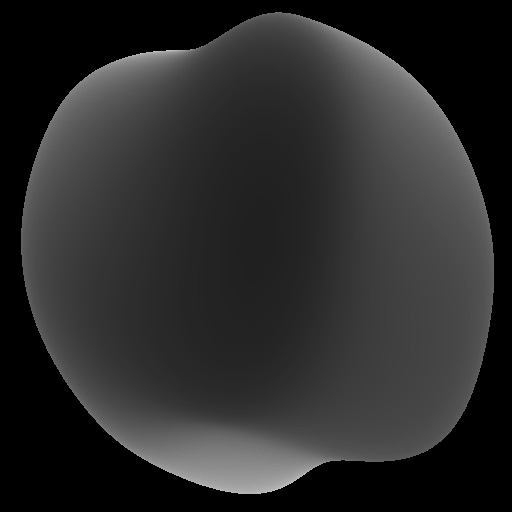
|
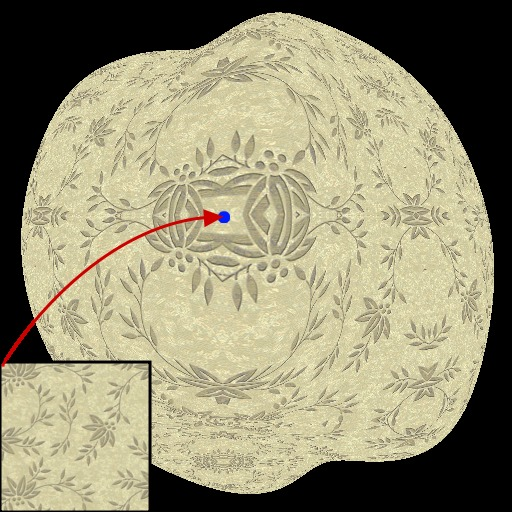
|
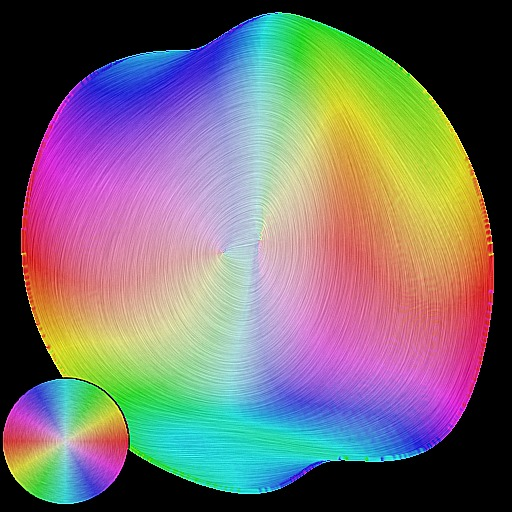
|
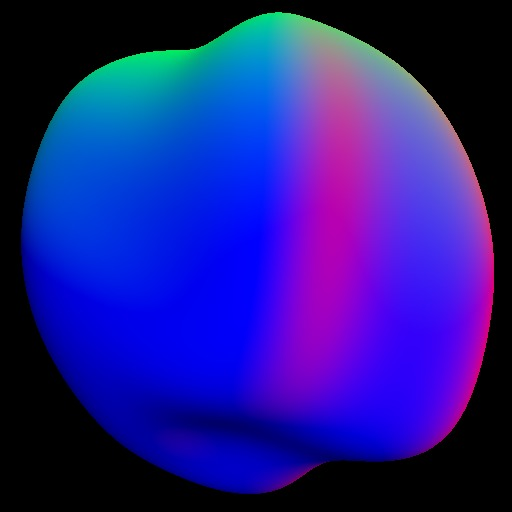
|
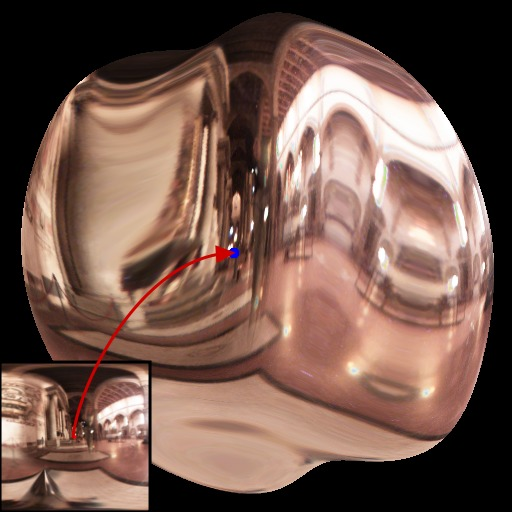
|

|
| (a) | (b) | (c) | (d) | (e) | (f) |
In the MANAO project, we want to investigate representations beyond the classical light, shape, and matter decomposition. We thus want to directly control the appearance of objects both in 2D and 3D applications (e.g., 84): this is a core topic of computer graphics. When working with 2D vector graphics, digital artists must carefully set up color gradients and textures: examples range from the creation of 2D logos to the photo-realistic imitation of object materials. Classic vector primitives quickly become impractical for creating illusions of complex materials and illuminations, and as a result an increasing amount of time and skill is required. This is only for still images. For animations, vector graphics are only used to create legible appearances composed of simple lines and color gradients. There is thus a need for more complex primitives that are able to accommodate complex reflection or texture patterns, while keeping the ease of use of vector graphics. For instance, instead of drawing color gradients directly, it is more advantageous to draw flow lines that represent local surface concavities and convexities. Going through such an intermediate structure then allows to deform simple material gradients and textures in a coherent way (see Figure 7), and animate them all at once. The manipulation of 3D object materials also raises important issues. Most existing material models are tailored to faithfully reproduce physical behaviors, not to be easily controllable by artists. Therefore artists learn to tweak model parameters to satisfy the needs of a particular shading appearance, which can quickly become cumbersome as the complexity of a 3D scene increases. We believe that an alternative approach is required, whereby material appearance of an object in a typical lighting environment is directly input (e.g., painted or drawn), and adapted to match a plausible material behavior. This way, artists will be able to create their own appearance (e.g., by using our shading primitives 84), and replicate it to novel illumination environments and 3D models. For this purpose, we will rely on the decompositions and tools issued from Axis 1.
4 Application domains
4.1 Physical Systems
Given our close relationships with researchers in optics, one novelty of our approach is to extend the range of possible observers to physical sensors in order to work on domains such as simulation, mixed reality, and testing. Capturing, processing, and visualizing complex data is now more and more accessible to everyone, leading to the possible convergence of real and virtual worlds through visual signals. This signal is traditionally captured by cameras. It is now possible to augment them by projecting (e.g., the infrared laser of Microsoft Kinect) and capturing (e.g., GPS localization) other signals that are outside the visible range. This supplemental information replaces values traditionally extracted from standard images and thus lowers down requirements in computational power. Since the captured images are the result of the interactions between light, shape, and matter, the approaches and the improved knowledge from MANAO help in designing interactive acquisition and rendering technologies that are required to merge the real and the virtual worlds. With the resulting unified systems (optical and digital), transfer of pertinent information is favored and inefficient conversion is likely avoided, leading to new uses in interactive computer graphics applications, like augmented reality, displays and computational photography.
4.2 Interactive Visualization and Modeling
This direction includes domains such as scientific illustration and visualization, artistic or plausible rendering, and 3D modeling. In all these cases, the observer, a human, takes part in the process, justifying once more our focus on real-time methods. When targeting average users, characteristics as well as limitations of the human visual system should be taken into account: in particular, it is known that some configurations of light, shape, and matter have masking and facilitation effects on visual perception. For specialized applications (such as archeology), the expertise of the final user and the constraints for 3D user interfaces lead to new uses and dedicated solutions for models and algorithms.
5 Social and environmental responsibility
5.1 Footprint of research activities
For a few years now, our team has been collectively careful in limiting its direct environmental impacts, mainly by limiting the number of flights and extending the lifetime of PCs and laptops beyond the warranty period.
5.2 Environmental involvement
Gaël Guennebaud and Pascal Barla are engaged in several actions and initiatives related to the environmental issues, both within Inria itself, and within the research and higher-education domain in general:
- They are members of the “Local Sustainable Development Committee” of Inria Bordeaux.
- They are animators of the “The Climate Fresk”.
- G. Guennebaud is a member of the “Social and Environmental Responsibility Committee” of the LaBRI and of the “transition network” of the University of Bordeaux.
- At the Inria's national level, G. Guennebaud is part of two working groups on the reduction of the footprint of professional travels and computer devices respectively.
- Ecoinfo: G. Guennebaud is involved within the GDS Ecoinfo of the CNRS, and in particular he is in charge of the development of the ecodiag tool among other activities.
- Labo1point5: G. Guennebaud is part of the labos1point5 GDR, in particular to help with the development of a module to take into account the carbon footprint of ICT devices within their carbon footprint estimation tool (GES1point5). The first version of the module has been released in October 2021.
- G. Guennebaud participate in the elaboration and dissemination of an introductory course to climate change issues and environnemental impacts of ICT, with two colleagues of the LaBRI.
6 Highlights of the year

Novel appearance achieved with nano-particles deposited on a substrate.
Examples of appearance for a classical coating (a) without nano-particle,
(b) with nano-particles (silver spheres of 90nm radius) spatially correlated and
(c) deposited on a 400nm thickness
Nanostructured materials have recently emerged as a promising approach for material appearance design. Research has mainly focused on creating structural colors by wave interference, leaving aside other important aspects that constitute the visual appearance of an object, such as the respective weight of specular and diffuse reflectance, object macroscopic shape, illumination and viewing conditions. Here (cf. 10) we report the potential of disordered optical metasurfaces to harness visual appearance. We develop a multiscale modeling platform for the predictive rendering of macroscopic objects covered by metasurfaces in realistic settings, and show (cf. Figure 8) how nanoscale resonances and mesoscale interferences can be used to spectrally and angularly shape reflected light and thus create unusual visual effects at the macroscale. We validate this property with realistic synthetic images of macroscopic objects and centimeter-scale samples observable with the naked eye. This framework opens new perspectives in many branches of fine and applied visual arts.
6.1 Institutional life
The team wishes to thank the Commission d'Évaluation for its outstanding efforts, in 2022 and previous years, in defending the interests of the research community, keeping us thoroughly informed about topics relevant to the scientific life at Inria, and upholding the moral and intellectual values we are collectively proud of and which define our institute.
7 New software and platforms
7.1 New software
7.1.1 Spectral Viewer
-
Keyword:
Image
-
Functional Description:
An open-source (spectral) image viewer that supports several images formats: ENVI (spectral), exr, png, jpg.
- URL:
-
Authors:
Arthur Dufay, Romain Pacanowski, Pascal Barla, Alban Fichet, David Murray
-
Contact:
Romain Pacanowski
-
Partner:
LP2N (CNRS - UMR 5298)
7.1.2 Malia
-
Name:
The Malia Rendering Framework
-
Keywords:
3D, Realistic rendering, GPU, Ray-tracing, Material appearance
-
Functional Description:
The Malia Rendering Framework is an open source library for predictive, physically-realistic rendering. It comes with several applications, including a spectral path tracer, RGB-to-spectral conversion routines a blender bridge and a spectral image viewer.
- URL:
-
Authors:
Arthur Dufay, Romain Pacanowski, Pascal Barla, David Murray, Alban Fichet
-
Contact:
Romain Pacanowski
7.1.3 FRITE
-
Keywords:
2D animation, Vector-based drawing
-
Functional Description:
2D animation software allowing non linear editing
-
Authors:
Pierre Benard, Pascal Barla
-
Contact:
Pierre Benard
7.1.4 ecodiag
-
Keywords:
CO2, Carbon footprint, Web Services
-
Functional Description:
Ecodiag is a web service to estimate the carbon footprint of the computer equipments.
-
Contact:
Gael Guennebaud
-
Partner:
Ecoinfo
7.2 New platforms
7.2.1 La Coupole
Participants: Romain Pacanowski, Marjorie Paillet, Morgane Gerardin, David Murray.
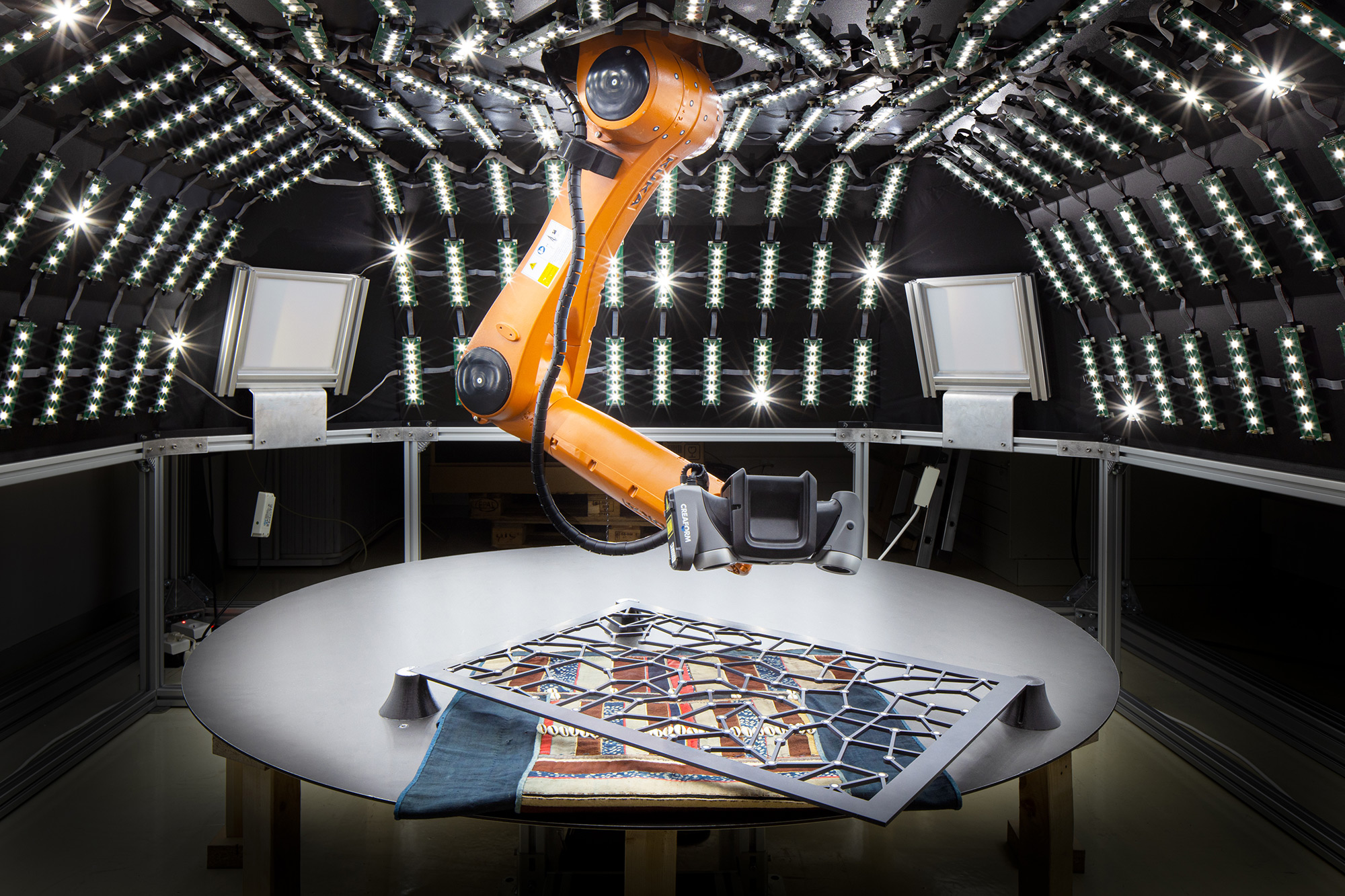
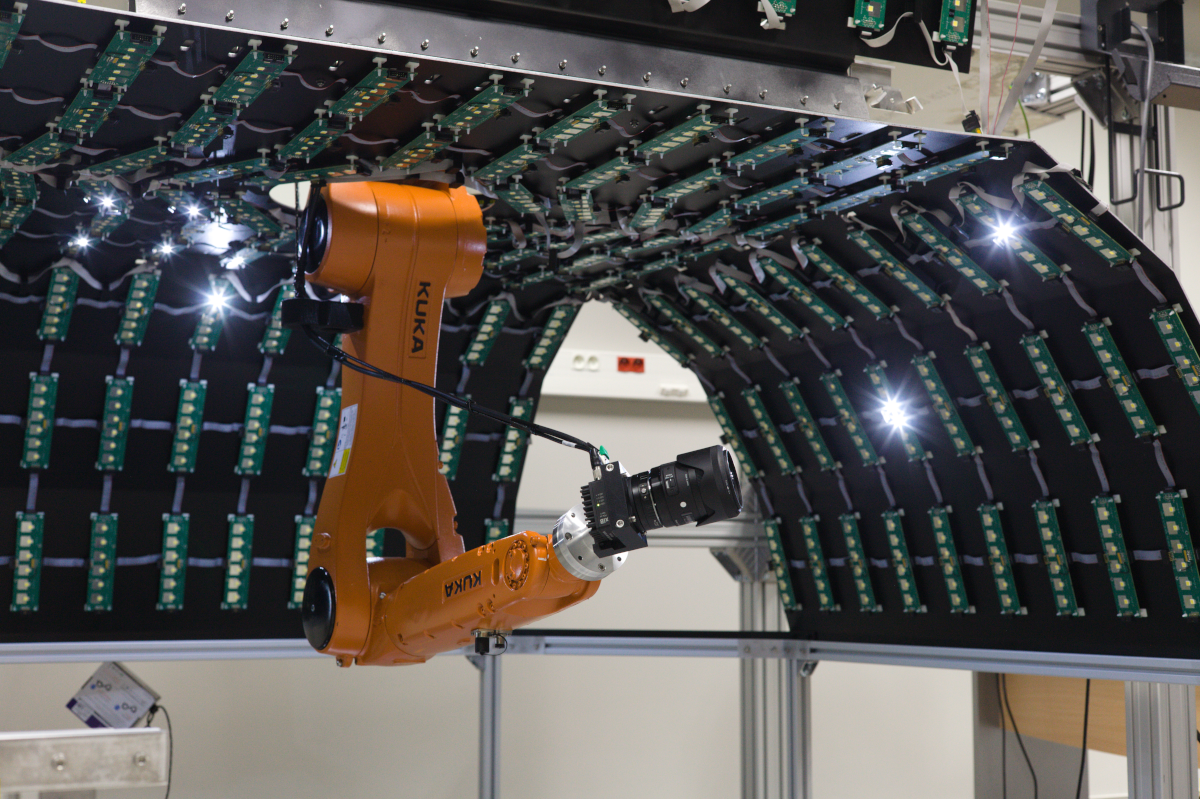
Left, view of La Coupole and the robot with the 3D scanner mounted, before the acquisition phase of the optical properties performed with a high speed camera (Right) that photographs the object for each lit LED. (Photo Credits Arthur Pequin.)
La Coupole is a measurement device that acquires spatially-varying reflectance function (SV-BRDF)
on non-planar object which area can be up to 1.5m
Its main characteristics are:
- RGB 12MP Camera (100 fps)
- 6-axes Robot
- 1080 White LED
- 3D Laser Scanner Laser: 200
- Maximal Measurement Area: 1.75 m
- Optical Resolution: 50
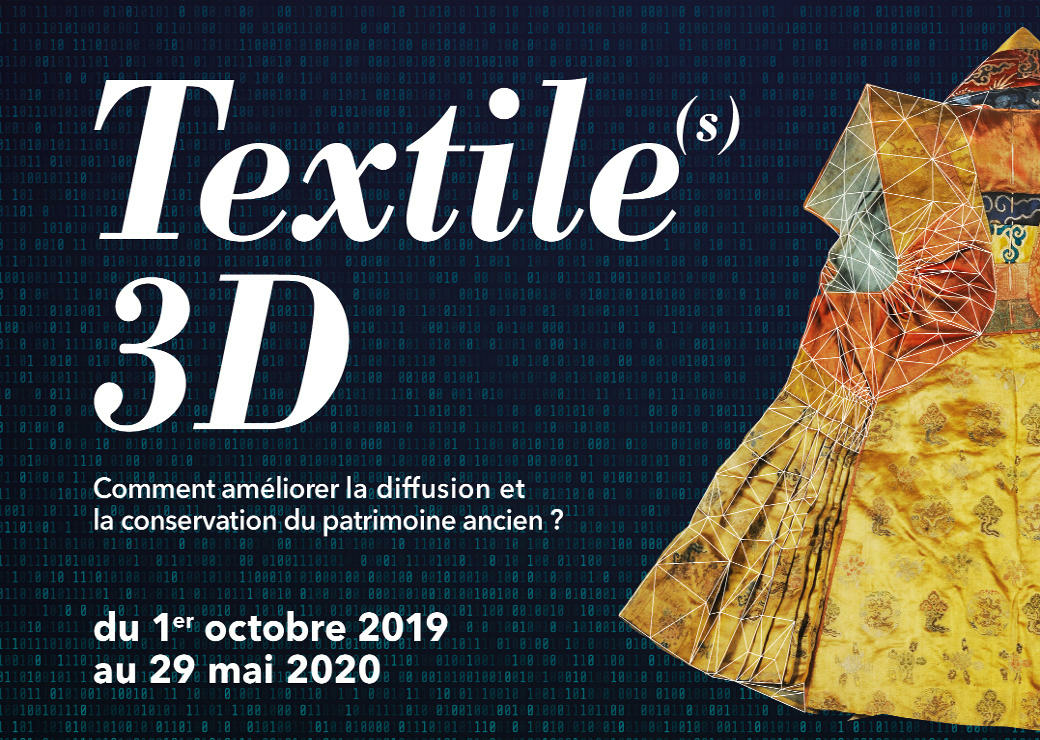
|
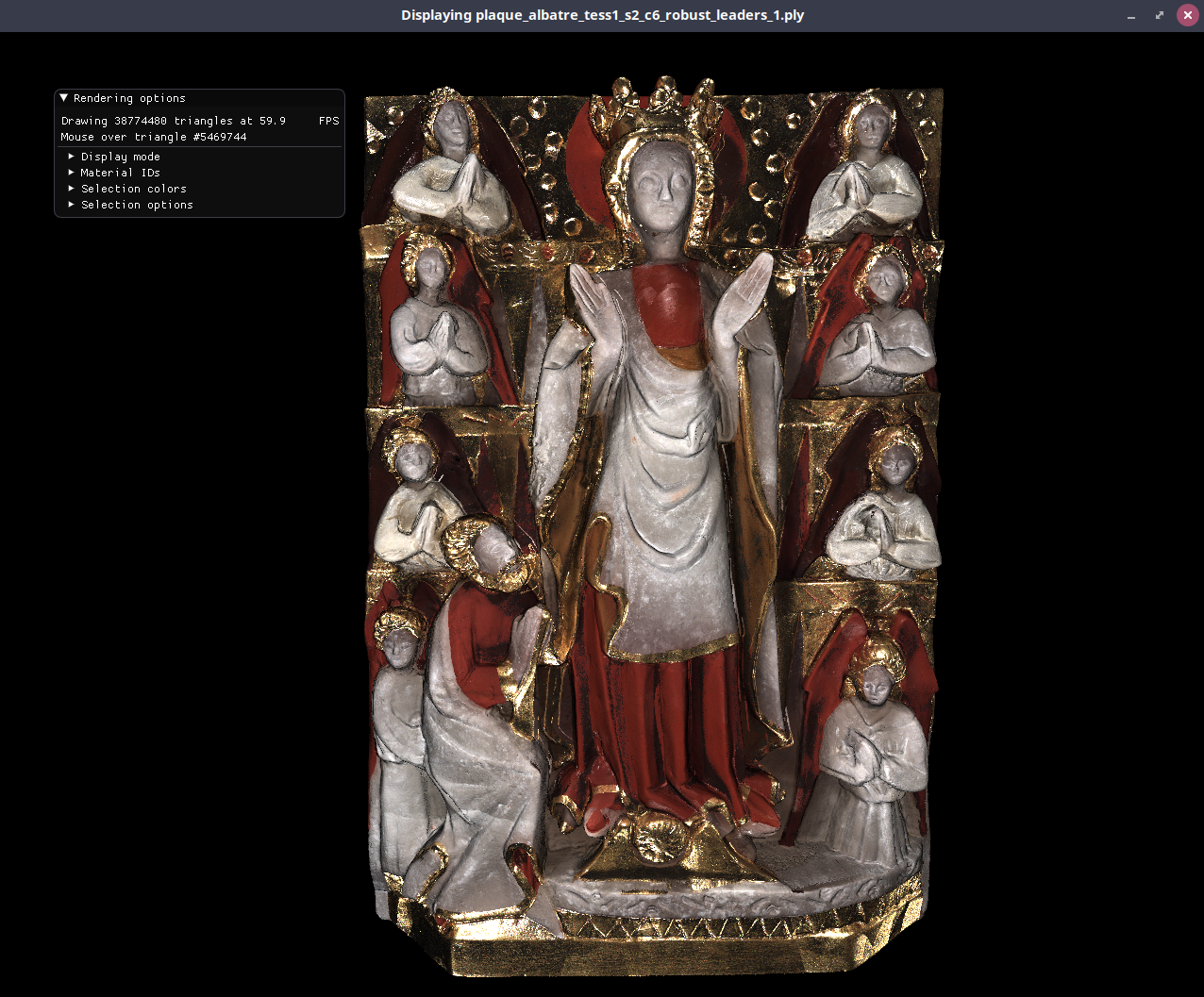
|
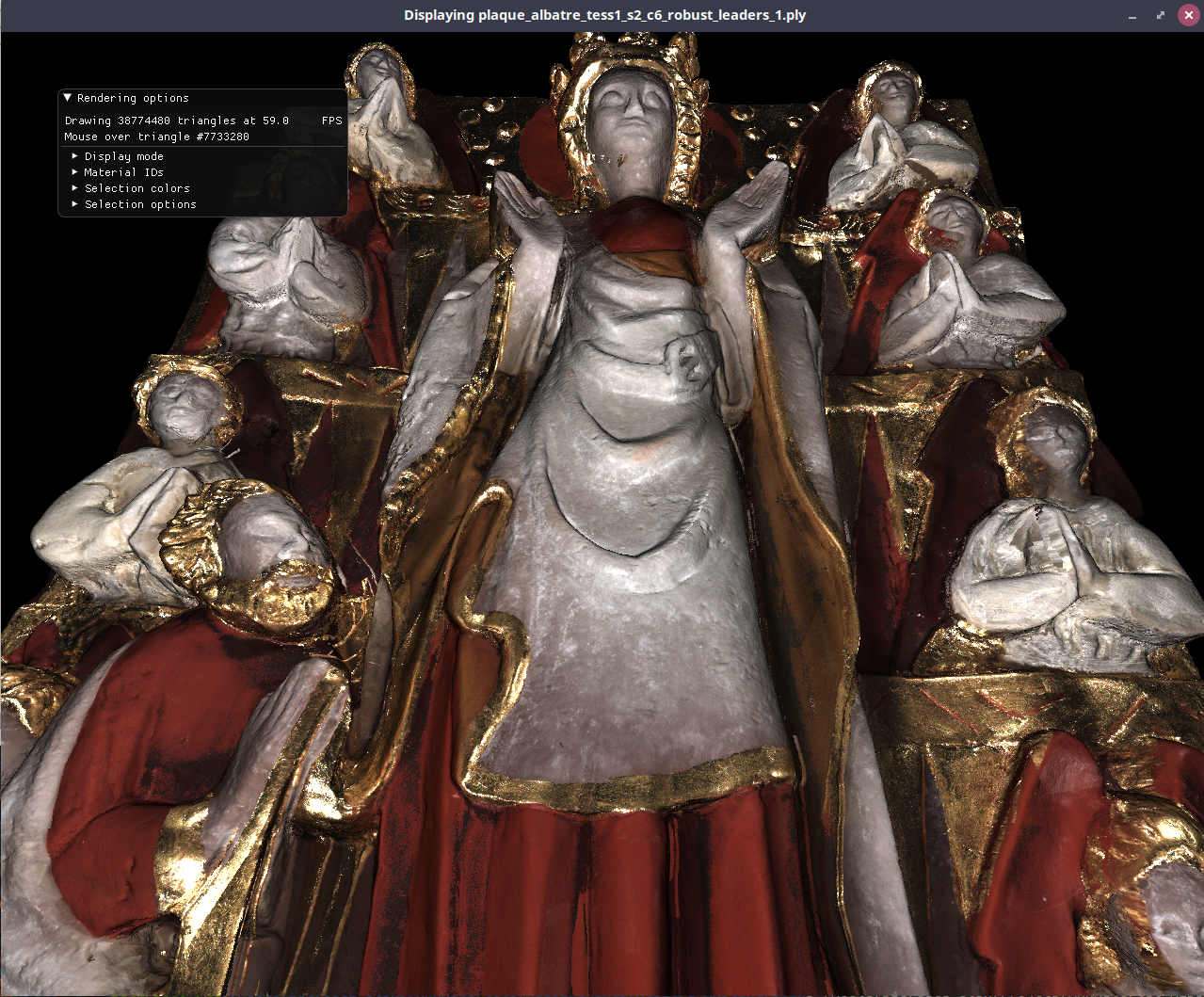
|
Left, official poster of the Exhibition Textiles 3D presented to the museum of Ethnography of Bordeaux. Center and Right, 3D digital reconstruction of an alabaster piece using data acquired by La Coupole.
La Coupole is capable of measuring objects with an average angular accuracy of 0.22 degrees, generates 4 terabytes of data per hour of measurement and allows the measurement of spatially varying BRDFs (SV-BRDF) on a non-planar shape. The 50 mm lens combined with the camera allows to obtain a spatial resolution resolution of 50 microns which corresponds approximately to the resolution of the human visual system (for an object placed at about 20 cm from the observer). After two years of conception and realization, la Coupole was used to digitize 10 garments from the collections (cf. Figure 11) of the Ethnography Museum of Bordeaux as well as as well as a reconstruction of an alabaster (cf. Figure 10) within the framework of the project LaBeX "Albâtres" project and will continue to be used the newly accepted regional project named VESPAA (see Section 10.3)
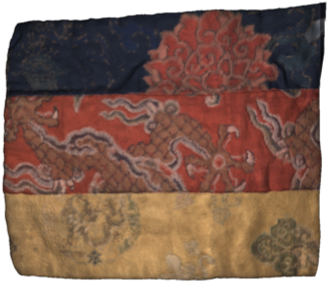
|
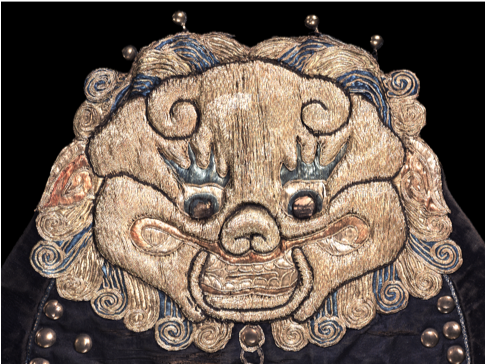
|
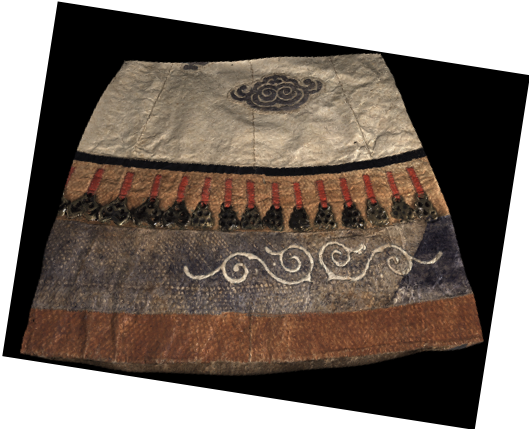
|
| Gilet de Femme | Ceinture | Manteau |
Numerical reconstructions with albedo (hemispherical reflectivity) per mesh vertex for different types of clothing : Left, the woman's silk and cotton vest (Tibet, late nineteenth century), a video featuring other points of view viewpoints is available here. Center,partial view of a central ornament of the apron: in navy blue quilted satin with embroidery in net representing a lion's head, and blue, white and red floche silk embroideries, a little yellow; black velvet facings; origin: China, 19th century. Right, coat made of fish skins from Siberia (twentieth century), a video showing other views is available views is availablehere.
7.2.2 Measuring Bidirectional Subscattering Reflectance and Transmission Functions
Participants: Morgane Gerardin, Romain Pacanowski.
A new platform (cf. Figure 12) to measure the volumetric properties of the light is currently being developed. The project started in March 2022 with the arrival of our new postdoctoral fellow Morgane Gérardin. The plaform permits to measure the diffusion of the light in reflection (aka BSSRDF) but also in Transmission (BSSTDF). A sample holder with two motorized axes orientates the sample wrt. to the direction of incident illumination while another motorized axis rotates a camera to image the sample (cf. Figure 13).
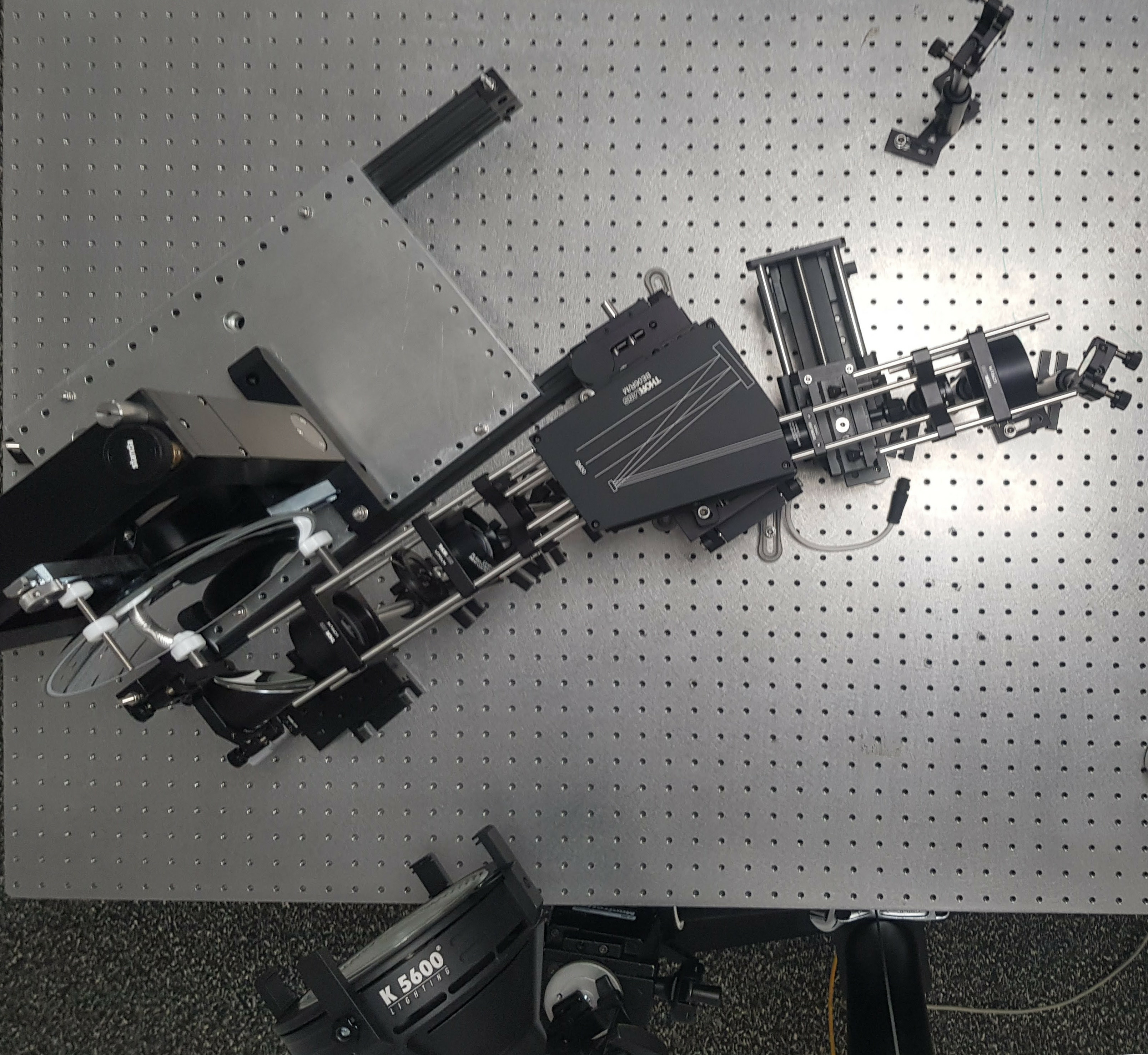
|
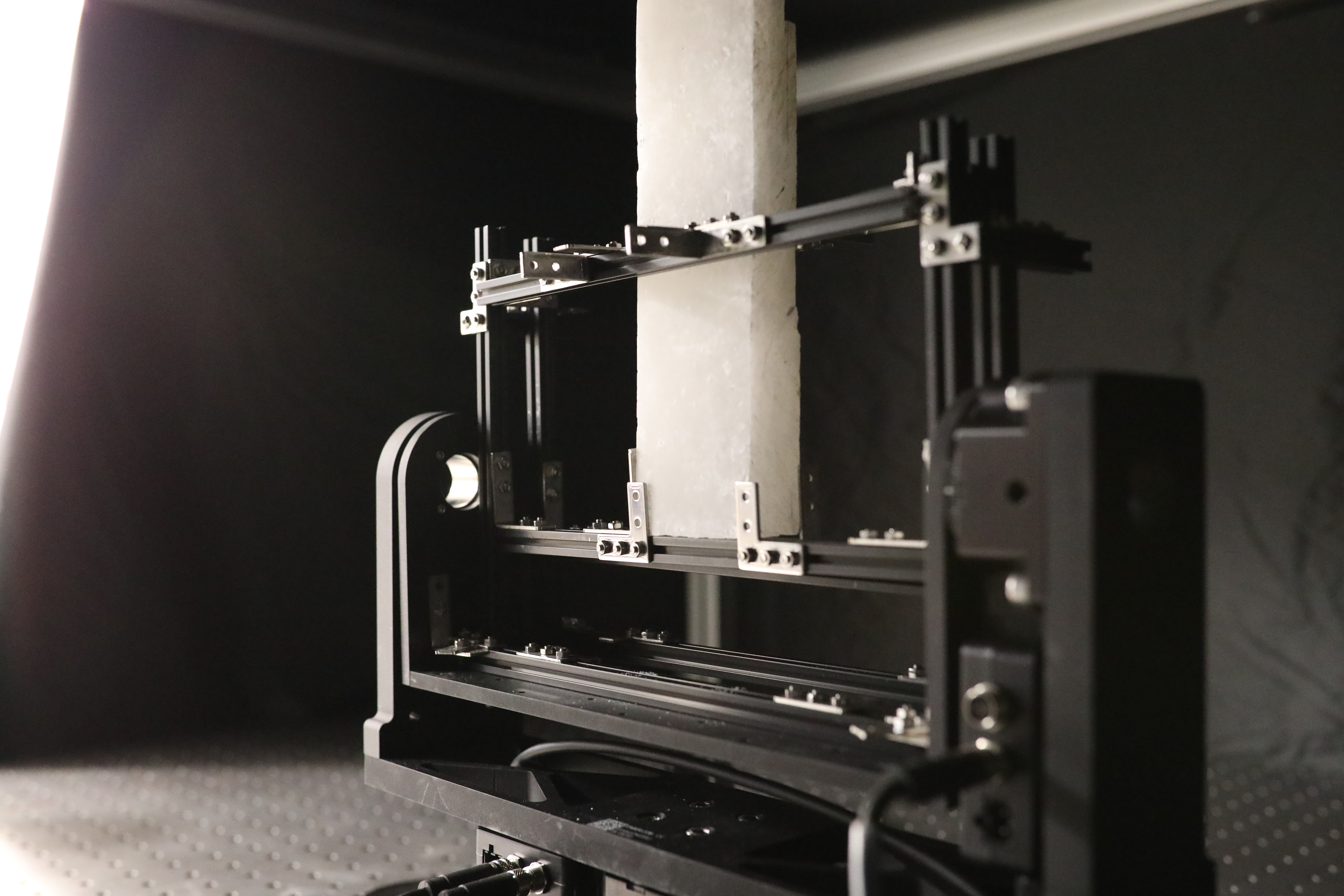
|
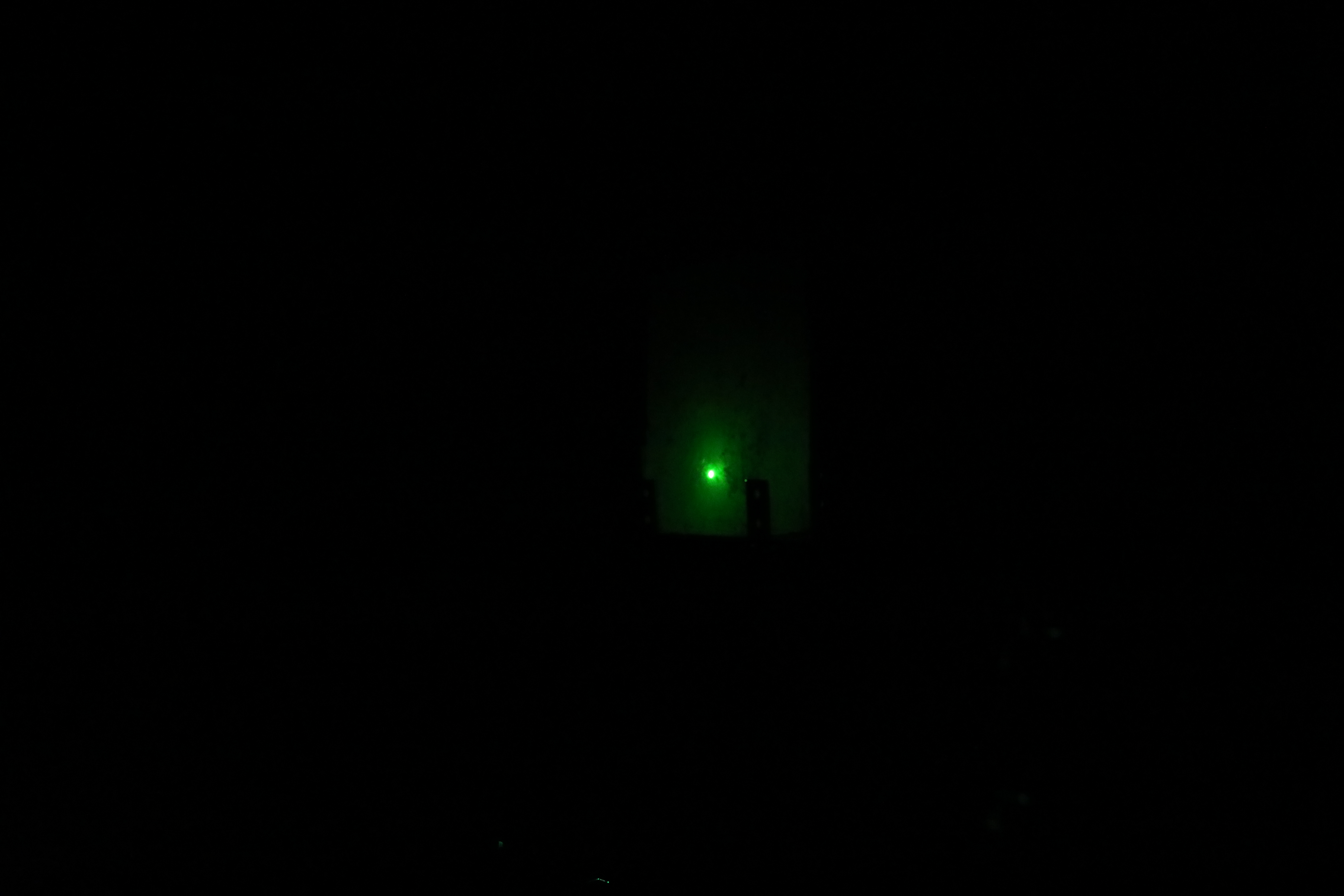
|
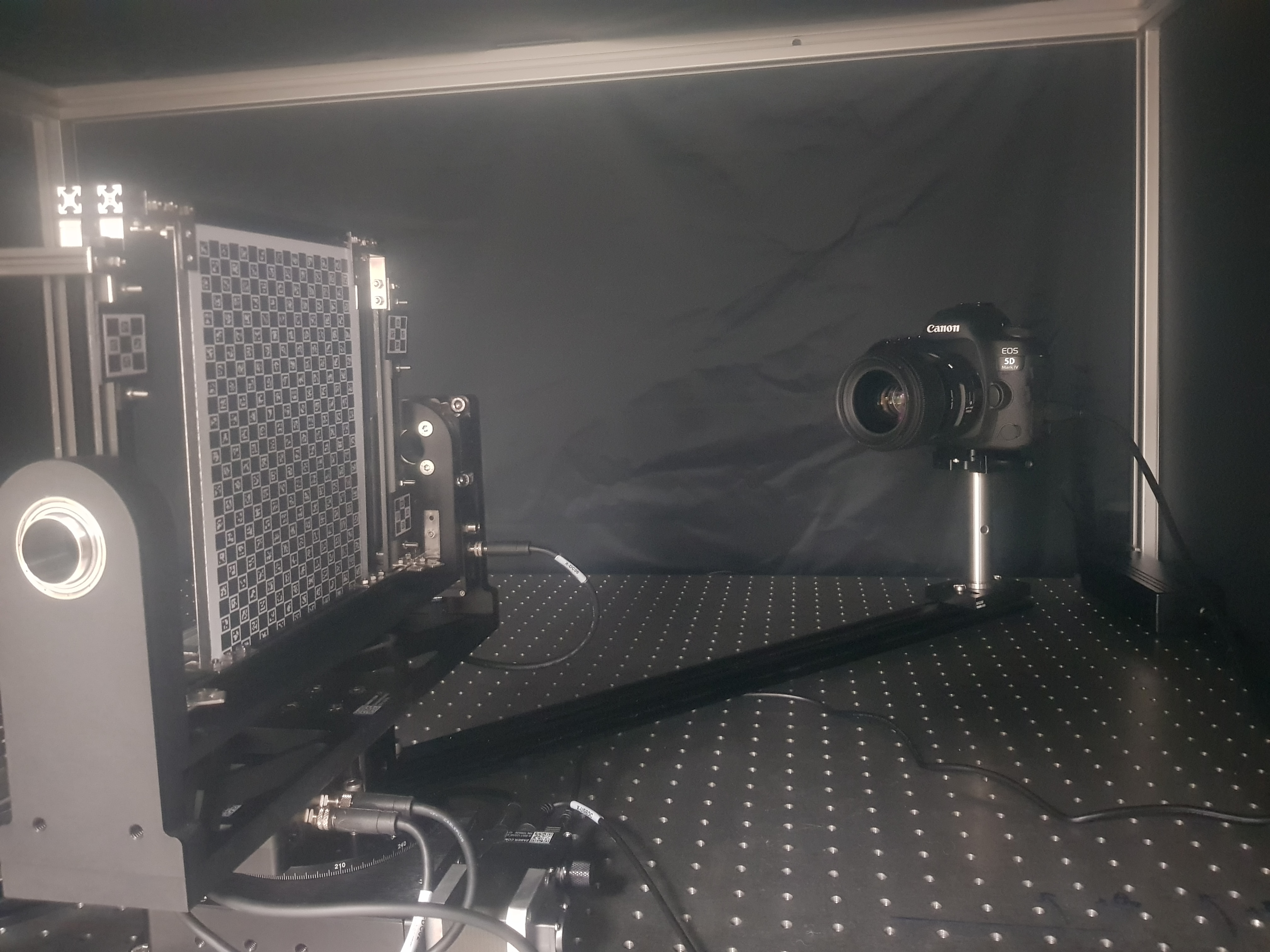
Measurement principle
8 New results
8.1 Analysis and Simulation
8.1.1 The visual appearances of disordered optical metasurfaces
Participants: Kevin Vynck [LP2N], Romain Pacanowski, Adrian Agreda [LP2N], Arthur Dufay, Xavier Granier [LP2N], Philippe Lalanne [LP2N].
Nanostructured materials have recently emerged as a promising approach for material appearance design. Research has mainly focused on creating structural colours by wave interference, leaving aside other important aspects that constitute the visual appearance of an object, such as the respective weight of specular and diffuse reflectances, object macroscopic shape, illumination and viewing conditions. Here we report the potential of disordered optical metasurfaces to harness visual appearance. We develop a multiscale modelling platform for the predictive rendering of macroscopic objects covered by metasurfaces in realistic settings, and show how nanoscale resonances and mesoscale interferences can be used to spectrally and angularly shape reflected light and thus create unusual visual effects at the macroscale (cf. Figure 14). We validate this property with realistic synthetic images of macroscopic objects and centimetre-scale samples observable with the naked eye. This framework opens new perspectives in many branches of fine and applied visual arts.
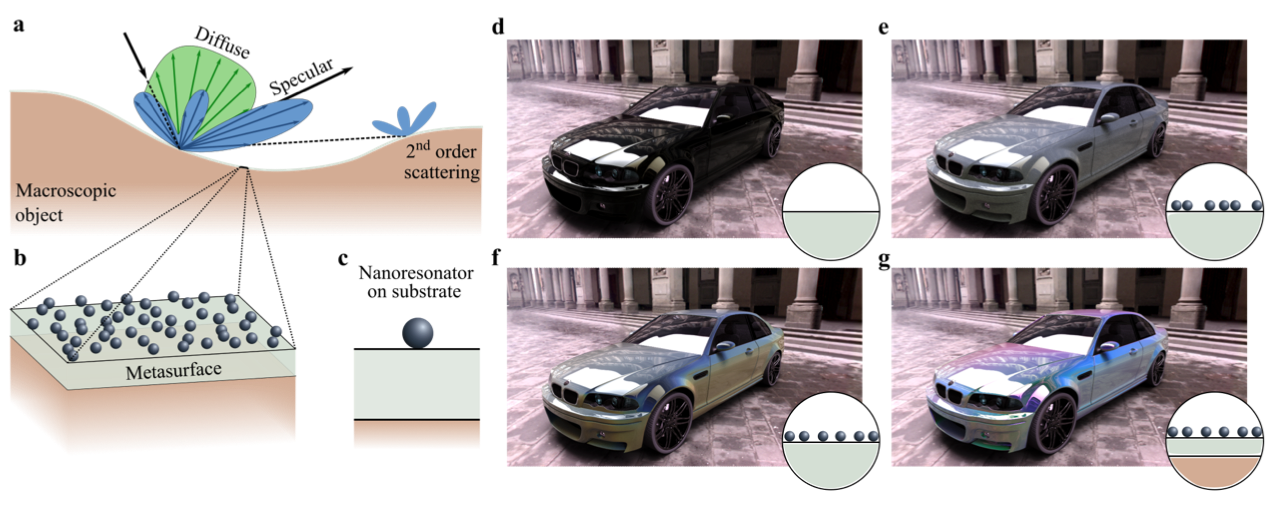
Novel appearance achieved with nano-particles deposited on a substrate.
Left: Multiscale nature of the visual appearance of disordered metasurfaces, from the individual particle resonantly interacting with the substrate interfaces (c) to the ensemble of particles interacting together to form collective scattering effects (b), to the macroscopic surface that can experience multiple internal reflections (a). Right: Examples of appearance for a classical coating (d) without nano-particle,
with nano-particles (silver spheres of 90nm radius) (e) distributed at random positions, (f) spatially correlated, and (g) deposited on a 400nm thickness
8.2 From Acquisition to Display
8.2.1 Non‐invasive on‐site method for thickness measurement of transparent ceramic glazes based on depth from focus
Participants: Corentin Cou, Ayed Ben Amara [Archéosciences Bordeaux], Xavier Granier.
Glazed ceramics are a common material analyzed through geochemistry, whether in the form of tableware collected during excavations or tiles observed as part of architectural features. Within the framework of these studies, measuring the thickness of the transparent glaze is one of the useful variables available for the characterization of the ceramic, contributing to searches for provenance as well as serialization. However, this task often requires invasive methods performed in the laboratory, which may not always be possible. This paper 6 develops a non-invasive and portable on-site system for measuring the thickness of ceramic glazes. Based on the Depth from Focus (DfF) technique, this method makes use of a classical camera, a macroscopic lens, a translation stage, and a laptop for system control. In this article, we test this method through the measurement of glaze for ten samples and compared to results obtained for sections through SEM (cf. Figure 15).
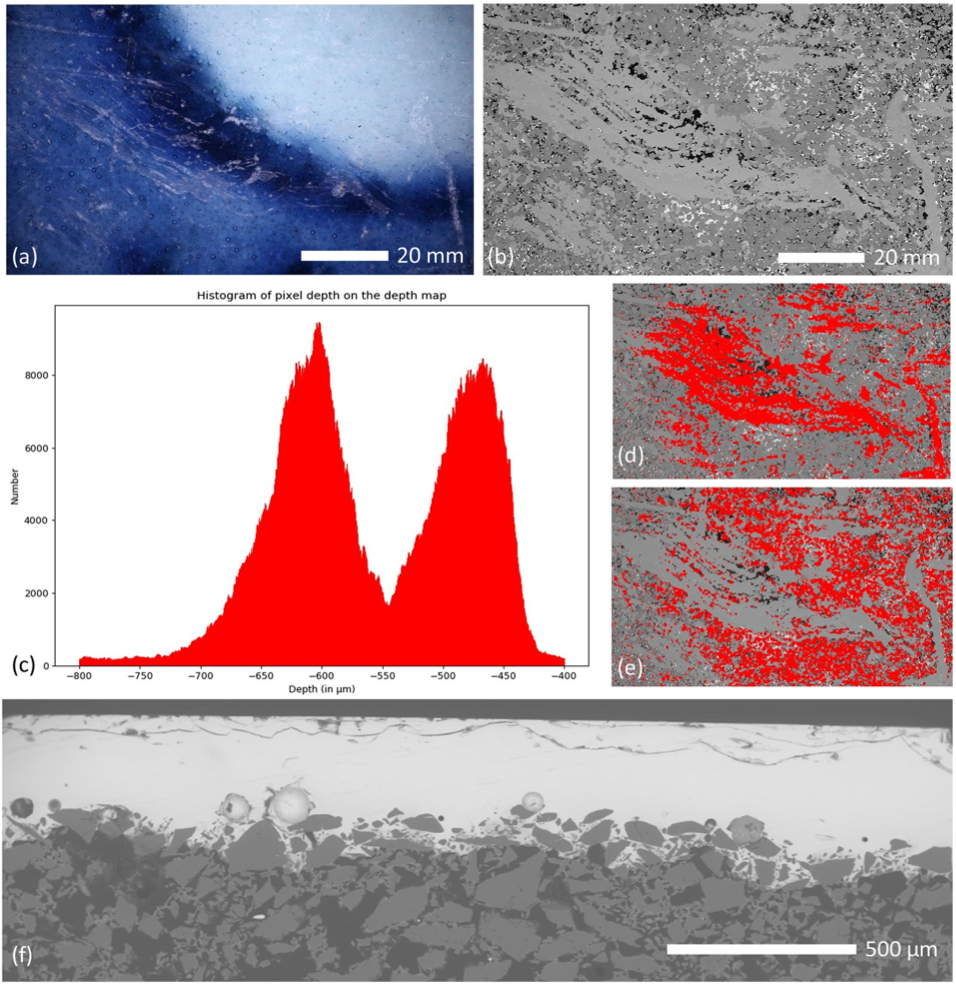
thickness measurement of transparent ceramic glazes based on depth from focus
8.2.2 A hybrid multi-view and eye-tracked transparent auto-stereoscopic display for augmented reality
Participants: Charlie Schlick, Thomas Crespel, Xavier Granier, Patrick Reuter.
In this paper 12, we put forward the use of transparent 3D displays for augmented reality. For a glasses-free experience with autostereoscopy and a large viewing area, we study the use of a recent transparent display with multiple discrete and horizontally adjacent viewing zones. Although promising, this display cannot directly be used for augmented reality due to inconsistencies within and between the discrete viewing zones. In this work, we propose to overcome this limitation by tracking the user's eyes for ensuring continuous transitions, thus making the display feasible for augmented reality (cf. Figure 16). In particular, we compensate the intensity variations, we ensure a consistent horizontal parallax within and between the adjacent viewing zones, and we add vertical parallax. In this way, the display becomes a transparent augmented window that can be used for various augmented reality applications. We present results on a display with 5 viewing zones for three different use cases, evaluate the appropriateness, discuss the limitations, and show future directions.
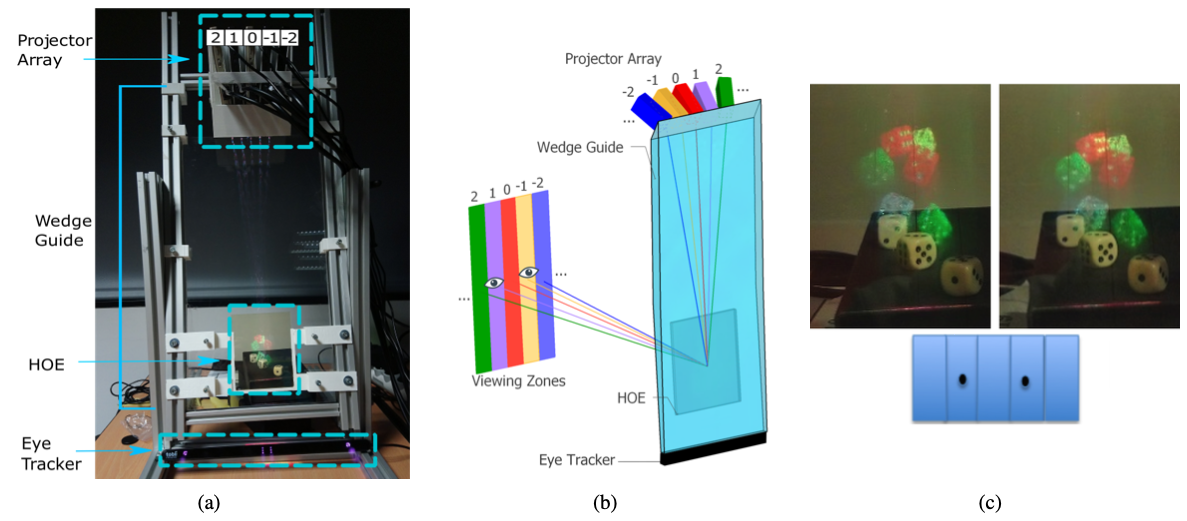
hybrid multi-view and eye-tracked transparent auto-stereoscopic display
8.3 Rendering, Visualization and Illustration
8.3.1 ConTesse: Accurate Occluding Contours for Subdivision Surfaces
Participants: Chenxi Liu [University of British Columbia], Pierre Benard, Aaron Hertzmann [Adobe Research], Shayan Hoshyari [Adobe].
In this paper 7 we propose a method for computing the visible occluding contours of subdivision surfaces. The paper first introduces new theory for contour visibility of smooth surfaces. Necessary and sufficient conditions are introduced for when a sampled occluding contour is valid, that is, when it may be assigned consistent visibility. Previous methods do not guarantee these conditions, which helps explain why smooth contour visibility has been such a challenging problem in the past. The paper then proposes an algorithm that, given a subdivision surface, finds sampled contours satisfying these conditions, and then generates a new triangle mesh matching the given occluding contours (cf. Figure 17). The contours of the output triangle mesh may then be rendered with standard non-photorealistic rendering algorithms, using the mesh for visibility computation. The method can be applied to any triangle mesh, by treating it as the base mesh of a subdivision surface.

ConTesse algorithm
8.4 Modeling environnemental impacts of digitization
Participants: Gaël Guennebaud, Antoine Dudouit, Aurélie Bugeau [Université de Bordeaux, LaBRI].
In 2022, we started to explore a side research direction consisting in designing novel methodologies to better account for the environnemental footprint of digital services. In particular, through the co-supervision of a Master internship we developed a parametric bottom-up model of a typical on-demand video streaming service. Our model instantiates the required equipments to store, process and distribute digital video content to users. In contrast to classical attributional approaches our approach does not suffer from lack of proportionality issues and properly assesses for the absolute global footprint instead of efficiency indicators. This makes our approach more suitable to drive actions and study “What-if” scenarios (Figure 18).
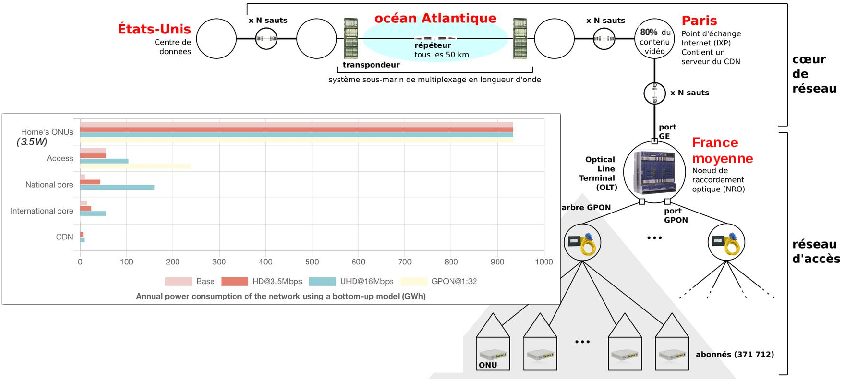
Parametric network model for streaming applications
9 Bilateral contracts and grants with industry
9.1 Bilateral contracts with industry
Research collaboration contract with Praxinos (2021-2024)
Participants: Melvin Even, Pierre Bénard, Pascal Barla.
This collaboration aims at defining new computer-assisted tools to facilitate the creation of 2D animations.
CIFRE PhD contract with Ubisoft (2022-2025)
Participants: Panagiotis Tsiapkolis, Pierre Bénard.
In this project, we aim at exploring artistic control in real-time stylized rendering of 3D scenes.
10 Partnerships and cooperations
10.1 International research visitors
10.1.1 Visits to international teams
Research stays abroad
Patrick Reuter
-
Visited institution:
Monash University, Department of Human-Centred Computing
-
Country:
Australia
-
Dates:
September 2022 - June 2023
-
Context of the visit:
CRCT
-
Type of mobility:
research stay
10.2 National initiatives
10.2.1 ANR
“Young Researcher” MoStyle (2021-2025)
- INRIA - LaBRI
Participants: Pierre Bénard, Pascal Barla, Melvin Even.
The main goal of this project is to investigate how computer tools can help capturing and reproducing the typicality of traditional 2D animations. Ultimately, this would allow to produce 2D animations with a unified appearance starting from roughs drawings or 3D inputs.
10.2.2 Inria Exploratory actions
Exploratory Action Ecoptics (2021-2024)
- INRIA
Participants: Gary Fourneau, Pascal Barla, Romain Pacanowski.
The main topic of this project is to contribute to the understanding of visual communication among animals. It explores new computer graphics techniques Il se propose de déveloper de nouvelles techniques de synthèse d'images afin de combler le fossé qui sépare les approches optique et écologique, connectant ainsi le transport lumineux dans des structures microscopiques à la surface d'un animal, aux signaux visuels perceptibles par un autre animal dans son habitat.
10.3 Regional initiatives
Vespaa (2022-2027) - INRIA and Region Nouvelle Aquitaine
Participants: Romain Pacanowski, Pierre Benard, Pascal Barla, Gael Guennebaud.
The project VESPAA focuses on high-fidelity rendering of African artifacts stored in different museums (Angoulême, La Rochelle, Bordeaux) of the Nouvelle Aquitaine Region.
The main goals of VESPAA are:
-
-
To improve the quality of measurements data acquired by La Coupole (see Section 7.2.1) in order to represent complex materials (gilding, pearl, patina and varnish)
-
-
To develop new SV-BRDF models and multi-resolution representations to visualize in real-time and with high fidelity the digitized objects under dynamic light and view directions. The targeted audience ranges from Cultural Heritage experts to mainstream public visiting the museums.
-
-
To make durable the acquired reflectance properties by storing the measurements (geometry and tabulated data) as well as the SV-BRDF models (Source Code) in a open database.
11 Dissemination
11.1 Promoting scientific activities
11.1.1 Scientific events: organisation
Participants: Anne-Laure Gautier, Pascal Barla, Patrick Reuter, Gael Guennebaud, Romain Pacanowski, Pierre Benard, Corentin Cou, Gary Fourneau, Marjorie Paillet, Morgane Gerardin, Simon Lucas, Melvin Even, Panagiotis Tsiapkolis.
We organized the 35th “Journées Françaises d'Informatique Graphique” (website) that took place in the Agora of the Haut-Carré, November 23-25. During this conference, 128 researchers (including 52 PhD students) from all around France gathered to listen to 22 selected talks given by junior researchers and to 5 invited presentations given by senior researchers from both academia and private companies.
Member of the conference program committees
- Eurographics Short Papers
Reviewer
- ACM Siggraph, ACM Siggraph Asia.
- Eurographics
- Eurographics Symposium on Rendering
- ACM SIGGRAPH Symposium on Interactive 3D Graphics and Games (i3D)
11.1.2 Journal
Reviewer - reviewing activities
- ACM Transactions on Graphics
- Computer Graphics Forum
- IEEE Transactions on Visualization and Computer Graphics
11.1.3 Invited talks
- GDR Appamat workshop in Lyon (Pascal Barla)
11.1.4 Research administration
- Participation in the local sustainability development committee (Gaël Guennebaud and Pascal Barla)
11.2 Teaching - Supervision - Juries
11.2.1 Teaching
The members of our team are involved in teaching computer science at University of Bordeaux and ENSEIRB-Matmeca engineering School. General computer science is concerned, as well as the following graphics related topics:
- Master: Pierre Bénard, Gaël Guennebaud, Romain Pacanowski, Advanced Image Synthesis, 50 HETD, M2, Univ. Bordeaux, France.
- Master: Gaël Guennebaud and Pierre Bénard, 3D Worlds, 60 HETD, M1, Univ. Bordeaux and IOGS, France.
- Master: Pierre Bénard, Patrick Reuter, Virtual Reality, 20 HETD, M2, Univ. Bordeaux, France.
- Master: Patrick Reuter, Graphical user interfaces and Spatial augmented reality seminars, 10 HETD, M2, ESTIA, France.
- Master: Romain Pacanowski, 3D Programming, M2, 18 HETD, Bordeaux INP ENSEIRB Matmeca, France.
- Licence: Patrick Reuter, Digital Imaging, 30 HETD, L3, Univ. Bordeaux, France.
- Licence: Gaël Guennebaud, Introduction to climate change issues and the environnemental impacts of ICT, 24 HETD, L3, Univ. Bordeaux, France.
One member is also in charge of a field of study:
- Master: Pierre Bénard, M2 “Informatique pour l'Image et le Son”, Univ. Bordeaux, France.
Pierre Bénard was also part of the education team of the DIU (Diplôme Inter-Universitaire) titled “Numérique et Sciences Informatiques” which is opened to secondary professors that are teaching Computer Science in high school. The second session took place during the last three weeks of June.
11.2.2 Supervision
- PhD in progress: Corentin Cou, “Characterization of visual appearance for 3D restitution and exploration of monumental heritage”, Inria & IOGS & CNRS/INHA, G. Guennebaud, X. Granier, M. Volait, R. Pacanowski.
- PhD in progress: Melvin Even, “Computer-Aided Rough 2D Animation”, Inria & Univ. Bordeaux, P. Barla, P. Bénard
- PhD in progress: Gary Fourneau, “ Modélisation de l’Apparence Visuelle pour l’Écologie Comportementale”, Inria & Univ. Bordeaux, P. Barla, R. Pacanowski
- PhD in progress: Simon Lucas, “Modélisation de l'apparence et rendu des plantes”, Inria & Univ. Bordeaux, P. Barla, R. Pacanowski
- PhD in progress: Panagiotis Tsiapkolis, “Study of Artistic Control in Real-Time Expressive Rendering”, Inria & Ubisoft, P. Bénard
- PhD in progress: Pierre La Rocca, “Modélisation paramétrique des impacts environnementaux des TIC : focus sur la numérisation de l'agriculture.”, Univ. Bordeaux, Aurélie Bugeau, G. Guennebaud
11.2.3 Juries
- Alban Gauthier (Pascal Barla, Reviewer, Paris)
- Arthur Couturier(Pascal Barla, Reviewer, Lusignan)
11.3 Popularization
11.3.1 Interventions
- Unithé ou Café event at Inria (April 2022). Romain Pacanowski gave a 45-minute talk on La Coupole
- During the national “Fête de la Science” event at Inria, Pierre Bénard gave a 30 minutes talk titled L'art et la science des films d'animation 3D.
- Conférence invité : “Empreinte carbone des heures de calculs – limites et paradoxes”, Journée scientifique MCIA, Gaël Guennebaud, 21/10/2022.
- Conférence invité : “Impacts environnementaux du numérique – quelques clefs pour comprendre et mieux agir”, Data Challenge IA-Pau, Gaël Guennebaud, 4/12/2022.
- Présentation invité : “Les impacts environnementaux du numérique : comprendre pour mieux agir”, World-cleanup-days Inrae Paris, Gaël Guennebaud, 03/2022.
- Présentation invité : “Impacts environnementaux du numérique : comprendre pour mieux agir”, Inrae Occitanie, Gaël Guennebaud, 25/10/2022.
12 Scientific production
12.1 Major publications
- 1 articleA Practical Extension to Microfacet Theory for the Modeling of Varying Iridescence.ACM Transactions on Graphics364July 2017, 65
- 2 articleAutostereoscopic transparent display using a wedge light guide and a holographic optical element: implementation and results.Applied optics5834November 2019
- 3 articleA Two-Scale Microfacet Reflectance Model Combining Reflection and Diffraction.ACM Transactions on Graphics364Article 66July 2017, 12
- 4 articleA View-Dependent Metric for Patch-Based LOD Generation & Selection.Proceedings of the ACM on Computer Graphics and Interactive Techniques11May 2018
- 5 articleInstant Transport Maps on 2D Grids.ACM Transactions on Graphics376November 2018, 13
12.2 Publications of the year
International journals
- 6 articleNon‐invasive on‐site method for thickness measurement of transparent ceramic glazes based on depth from focus.Archaeometry651February 2023, 105-117
- 7 articleConTesse: Accurate Occluding Contours for Subdivision Surfaces.ACM Transactions on GraphicsJuly 2022
- 8 articleAn open-source tool to assess the carbon footprint of research.Environmental Research: Infrastructure and Sustainability23September 2022, 035008
- 9 articleWhat Lies Beyond Sight? Applications of Ultraportable Hyperspectral Imaging (VIS-NIR) for Archaeological Fieldwork.Journal of Field Archaeology478October 2022, 522-535
- 10 articleThe visual appearances of disordered optical metasurfaces.Nature Materials21May 2022, 1035-1041
International peer-reviewed conferences
- 11 inproceedings3D Restitution 3D of Saint-Maurice Residence in Cairo – 3D as a tool to monitor and study architectural reuses.Interiors reconfigured: changing Materiality & craftsmanship in the decorative arts of the Middle East & North Africa (18th–20th centuries)Vitrocentre Romont, SwitzerlandNovember 2023
- 12 inproceedingsA hybrid multi-view and eye-tracked transparent auto-stereoscopic display for augmented reality.London Imaging Meeting31Londres, United KingdomSociety for Imaging Science and TechnologyJuly 2022, 60-64
Conferences without proceedings
- 13 inproceedingsEmpreinte carbone des heures de calculs : limites et paradoxes.Journée scientifique 2022 du Mésocentre de Calcul Intensif AquitainTalence, FranceOctober 2022
- 14 inproceedingsAnalyse Numérique de Modèles de Matériaux Poreux.JFIG 2022 - Journées Françaises de l'Informatique GraphiqueBordeaux (France), FranceNovember 2022
Reports & preprints
- 15 miscEnvironmental assessment of projects involving AI methods.January 2023
- 16 reportProposition de document de cadrage Évaluation environnementale de projets impliquant des méthodes d'IA.EcoInfo2022, 1-8
12.3 Other
Patents
- 17 patentNanostructured surface coating to generate new visual appearances.WO2022162297FranceAugust 2022
12.4 Cited publications
- 18 articleReliefs as images.ACM Trans. Graph.2942010, URL: http://doi.acm.org/10.1145/1778765.1778797
- 19 articleSurface Relief Analysis for Illustrative Shading.Computer Graphics Forum314June 2012, 1481-1490URL: http://hal.inria.fr/hal-00709492
- 20 techreportDistribution-based BRDFs.unpublishedUniv. of Utah2007
- 21 articleTime-resolved 3D Capture of Non-stationary Gas Flows.ACM Trans. Graph.2752008
- 22 bookSpatial Augmented Reality: Merging Real and Virtual Worlds.A K Peters/CRC Press2005
- 23 articleOptimizing Environment Maps for Material Depiction.Comput. Graph. Forum (Proceedings of the Eurographics Symposium on Rendering)3042011, URL: http://www-sop.inria.fr/reves/Basilic/2011/BCRA11
- 24 articleLeast Squares Subdivision Surfaces.Comput. Graph. Forum2972010, 2021-2028URL: http://hal.inria.fr/inria-00524555/en
- 25 articleStyle Transfer Functions for Illustrative Volume Rendering.Comput. Graph. Forum2632007, 715-724URL: http://www.cg.tuwien.ac.at/research/publications/2007/bruckner-2007-STF/
- 26 inproceedingsUnstructured lumigraph rendering.Proc. ACM SIGGRAPH2001, 425-432URL: http://doi.acm.org/10.1145/383259.383309
- 27 articleApplication of radial basis functions to shape description in a dual-element off-axis eyewear display: Field-of-view limit.J. Society for Information Display16112008, 1089-1098
- 28 articleA Survey on Participating Media Rendering Techniques.The Visual Computer2005
- 29 inproceedingsOn-Line Visualization of Underground Structures using Context Features.Symposium on Virtual Reality Software and Technology (VRST)ACM2010, 167-170URL: http://hal.inria.fr/inria-00524818/en
- 30 articleNon-oriented MLS Gradient Fields.Computer Graphics ForumDecember 2013, URL: http://hal.inria.fr/hal-00857265
- 31 articleLight field transfer: global illumination between real and synthetic objects.ACM Trans. Graph.2732008, URL: http://doi.acm.org/10.1145/1360612.1360656
- 32 articleA novel approach makes higher order wavelets really efficient for radiosity.Comput. Graph. Forum1932000, 99-108
- 33 articleA quantized-diffusion model for rendering translucent materials.ACM Trans. Graph.3042011, URL: http://doi.acm.org/10.1145/2010324.1964951
- 34 inproceedingsReflectance and texture of real-world surfaces.IEEE Conference on Computer Vision and Pattern Recognition (ICCV)1997, 151-157
- 35 articleFabricating spatially-varying subsurface scattering.ACM Trans. Graph.2942010, URL: http://doi.acm.org/10.1145/1778765.1778799
- 36 bookAdvanced Global Illumination.A.K. Peters2006
- 37 articleFrequency analysis and sheared filtering for shadow light fields of complex occluders.ACM Trans. Graph.3022011, URL: http://doi.acm.org/10.1145/1944846.1944849
- 38 articleFrequency Analysis and Sheared Reconstruction for Rendering Motion Blur.ACM Trans. Graph.2832009, URL: http://hal.inria.fr/inria-00388461/en
- 39 articleSpecular reflections and the perception of shape.J. Vis.492004, 798-820URL: http://journalofvision.org/4/9/10/
- 40 inproceedingsBRDF Acquisition with Basis Illumination.IEEE International Conference on Computer Vision (ICCV)2007, 1-8
- 41 articleAccurate Light Source Acquisition and Rendering.ACM Trans. Graph.2232003, 621-630URL: http://hal.inria.fr/hal-00308294
- 42 inproceedingsModeling the interaction of light between diffuse surfaces.Proc. ACM SIGGRAPH1984, 213-222
- 43 articlePhysical reproduction of materials with specified subsurface scattering.ACM Trans. Graph.2942010, URL: http://doi.acm.org/10.1145/1778765.1778798
- 44 phdthesisSimulating Global Illumination Using Adaptative Meshing.University of California1991
- 45 articleFluorescent immersion range scanning.ACM Trans. Graph.2732008, URL: http://doi.acm.org/10.1145/1360612.1360686
- 46 articleAcquisition and analysis of bispectral bidirectional reflectance and reradiation distribution functions.ACM Trans. Graph.2942010, URL: http://doi.acm.org/10.1145/1778765.1778834
- 47 articleDynamic Display of BRDFs.Comput. Graph. Forum3022011, 475--483URL: http://dx.doi.org/10.1111/j.1467-8659.2011.01891.x
- 48 articleTransparent and Specular Object Reconstruction.Comput. Graph. Forum2982010, 2400-2426
- 49 inproceedingsA Kaleidoscopic Approach to Surround Geometry and Reflectance Acquisition.IEEE Conf. Computer Vision and Pattern Recognition Workshops (CVPRW)IEEE Computer Society2012, 29-36
- 50 inproceedingsA theory of plenoptic multiplexing.IEEE Conf. Computer Vision and Pattern Recognition (CVPR)\bf oralIEEE Computer Society2010, 483-490
- 51 inproceedingsThe rendering equation.Proc. ACM SIGGRAPH1986, 143-150URL: http://doi.acm.org/10.1145/15922.15902
- 52 inproceedingsFast, arbitrary BRDF shading for low-frequency lighting using spherical harmonics.Proc. Eurographics workshop on Rendering (EGWR)Pisa, Italy2002, 291-296
-
53
articleEdge clustered fitting grids for
- 54 articleDemarcating curves for shape illustration.ACM Trans. Graph. (SIGGRAPH Asia)2752008, URL: http://doi.acm.org/10.1145/1409060.1409110
- 55 articleRecording and controlling the 4D light field in a microscope using microlens arrays.J. Microscopy23522009, 144-162URL: http://dx.doi.org/10.1111/j.1365-2818.2009.03195.x
- 56 articlePredicted Virtual Soft Shadow Maps with High Quality Filtering.Comput. Graph. Forum3022011, 493-502URL: http://hal.inria.fr/inria-00566223/en
- 57 articleProgrammable aperture photography: multiplexed light field acquisition.ACM Trans. Graph.2732008, URL: http://doi.acm.org/10.1145/1360612.1360654
- 58 articleOnline Tracking of Outdoor Lighting Variations for Augmented Reality with Moving Cameras.IEEE Transactions on Visualization and Computer Graphics184March 2012, 573-580URL: http://hal.inria.fr/hal-00664943
- 59 article3D TV: a scalable system for real-time acquisition, transmission, and autostereoscopic display of dynamic scenes.ACM Trans. Graph.2332004, 814-824URL: http://doi.acm.org/10.1145/1015706.1015805
- 60 articleA data-driven reflectance model.ACM Trans. Graph.2232003, 759-769URL: http://doi.acm.org/10.1145/882262.882343
- 61 inproceedingsAcquisition, Synthesis and Rendering of Bidirectional Texture Functions.Eurographics 2004, State of the Art Reports2004, 69-94
- 62 inproceedingsExperimental Analysis of BRDF Models.Proc. Eurographics Symposium on Rendering (EGSR)2005, 117-226
- 63 bookGeometrical Considerations and Nomenclature for Reflectance.National Bureau of Standards1977
- 64 articleOptical computing for fast light transport analysis.ACM Trans. Graph.2962010
- 65 articleVolumetric Vector-based Representation for Indirect Illumination Caching.J. Computer Science and Technology (JCST)2552010, 925-932URL: http://hal.inria.fr/inria-00505132/en
- 66 articleRational BRDF.IEEE Transactions on Visualization and Computer Graphics1811February 2012, 1824-1835URL: http://hal.inria.fr/hal-00678885
- 67 articleCompressive light transport sensing.ACM Trans. Graph.2812009
- 68 articleMulticamera Real-Time 3D Modeling for Telepresence and Remote Collaboration.Int. J. digital multimedia broadcasting2010Article ID 247108, 12 pages2010, URL: http://hal.inria.fr/inria-00436467
- 69 articleOn the relationship between radiance and irradiance: determining the illumination from images of a convex Lambertian object.J. Opt. Soc. Am. A18102001, 2448-2459
- 70 articleA first-order analysis of lighting, shading, and shadows.ACM Trans. Graph.2612007, URL: http://doi.acm.org/10.1145/1189762.1189764
- 71 bookComputational Photography: Mastering New Techniques for Lenses, Lighting, and Sensors.A K Peters/CRC Press2012
- 72 bookHigh Dynamic Range Imaging: Acquisition, Display and Image-Based Lighting.2nd editionMorgan Kaufmann Publishers2010
- 73 articlePocket reflectometry.ACM Trans. Graph.3042011
- 74 articleArcheoTUI-Driving virtual reassemblies with tangible 3D interaction.J. Computing and Cultural Heritage322010, 1-13URL: http://hal.inria.fr/hal-00523688/en
- 75 articleThe zonal method for calculating light intensities in the presence of a participating medium.ACM SIGGRAPH Comput. Graph.2141987, 293-302URL: http://doi.acm.org/10.1145/37402.37436
- 76 inproceedingsA New Change of Variables for Efficient BRDF Representation.Proc. EGWR '981998, 11-22
- 77 inproceedingsSpherical wavelets: efficiently representing functions on the sphere.Proc. ACM SIGGRAPHannual conference on Computer graphics and interactive techniques1995, 161-172URL: http://doi.acm.org/10.1145/218380.218439
- 78 bookRadiosity and Global Illumination.Morgan Kaufmann Publishers1994
- 79 articleFourier Depth of Field.ACM Transactions on Graphics2822009, URL: http://hal.inria.fr/inria-00345902
- 80 articleEfficient Glossy Global Illumination with Interactive Viewing.Computer Graphics Forum1912000, 13-25
- 81 articleBarycentric Parameterizations for Isotropic BRDFs.IEEE Trans. Vis. and Comp. Graph.1122005, 126-138URL: http://dx.doi.org/10.1109/TVCG.2005.26
- 82 bookVisual Perception from a Computer Graphics Perspective.A K Peters/CRC Press2011
- 83 articleAll-Frequency Precomputed Radiance Transfer Using Spherical Radial Basis Functions and Clustered Tensor Approximation.ACM Trans. Graph.2532006, 967-976
- 84 inproceedingsDynamic Stylized Shading Primitives.Proc. Int. Symposium on Non-Photorealistic Animation and Rendering (NPAR)ACM2011, 99-104URL: http://hal.inria.fr/hal-00617157/en
- 85 articleThe influence of shape on the perception of material reflectance.ACM Trans. Graph.2632007, URL: http://doi.acm.org/10.1145/1276377.1276473
- 86 inproceedingsMetropolis light transport.Proc. SIGGRAPH '97annual conference on Computer graphics and interactive techniquesACM/Addison-Wesley Publishing Co.1997, 65-76URL: http://doi.acm.org/10.1145/258734.258775
- 87 articleSurface Flows for Image-based Shading Design.ACM Trans. Graph.3132012, URL: http://hal.inria.fr/hal-00702280
- 88 articleImproving Shape Depiction under Arbitrary Rendering.IEEE Trans. Visualization and Computer Graphics1782011, 1071-1081URL: http://hal.inria.fr/inria-00585144/en
- 89 articleLight warping for enhanced surface depiction.ACM Trans. Graph.283\it front cover2009, 25:1URL: http://doi.acm.org/10.1145/1531326.1531331
- 90 articleImplicit Brushes for Stylized Line-based Rendering.Comput. Graph. Forum302\bf 3\textsuperscript{rd} best paper award2011, 513-522URL: http://hal.inria.fr/inria-00569958/en
- 91 articleSoft Textured Shadow Volume.Comput. Graph. Forum2842009, 1111-1120URL: http://hal.inria.fr/inria-00390534/en
- 92 articleKernel Nyström method for light transport.ACM Trans. Graph.2832009
- 93 articlePacket-based Hierarchical Soft Shadow Mapping.Comput. Graph. Forum2842009, 1121-1130URL: http://hal.inria.fr/inria-00390541/en


